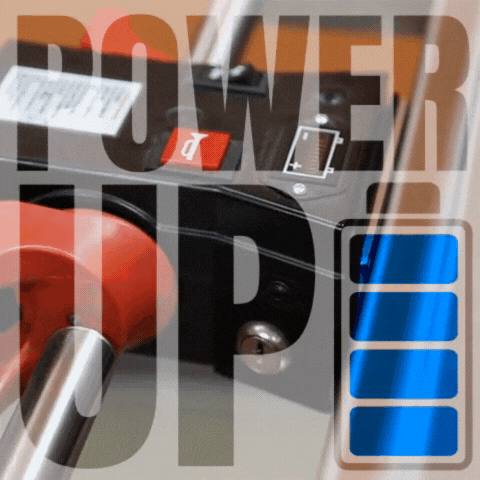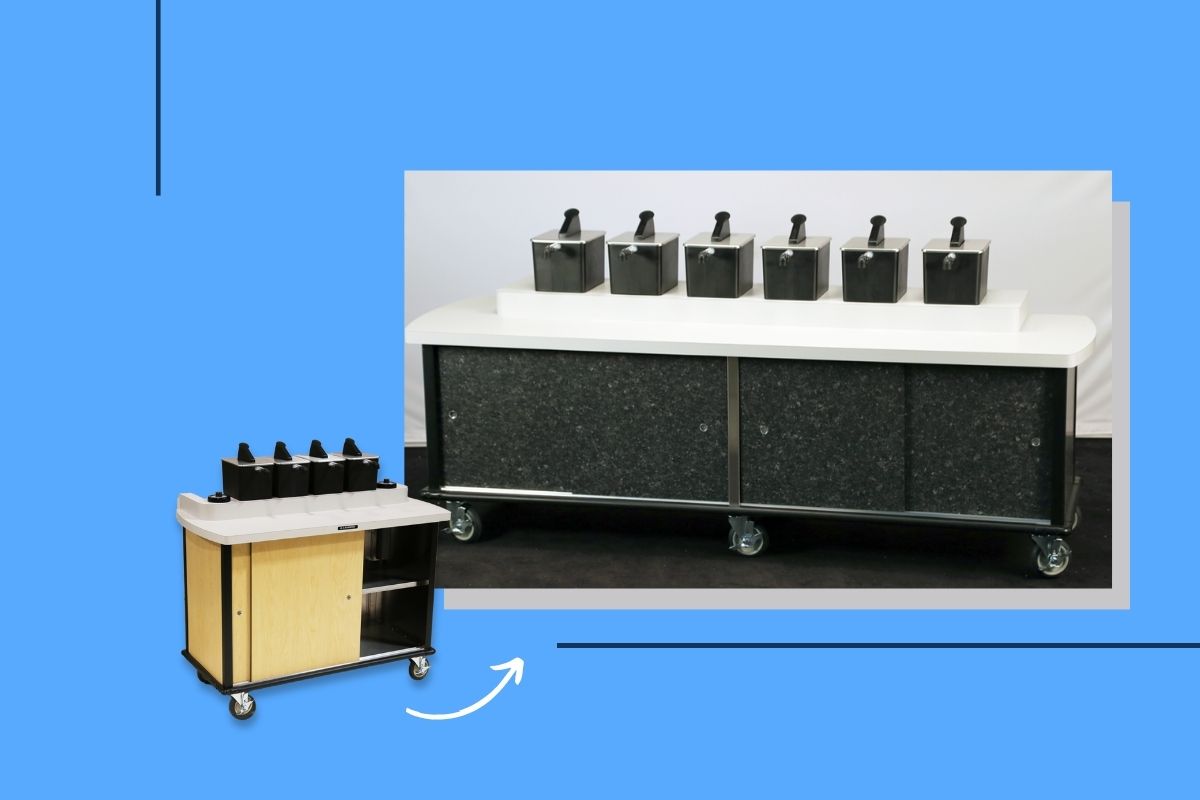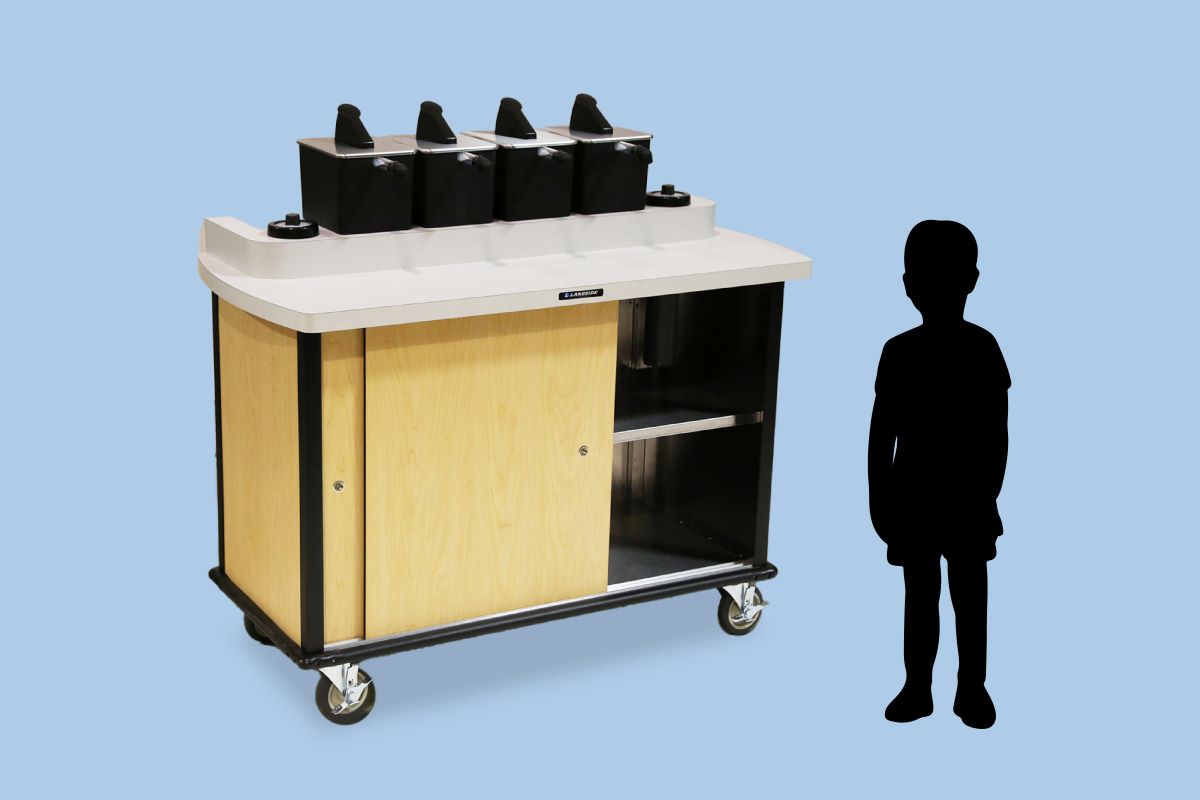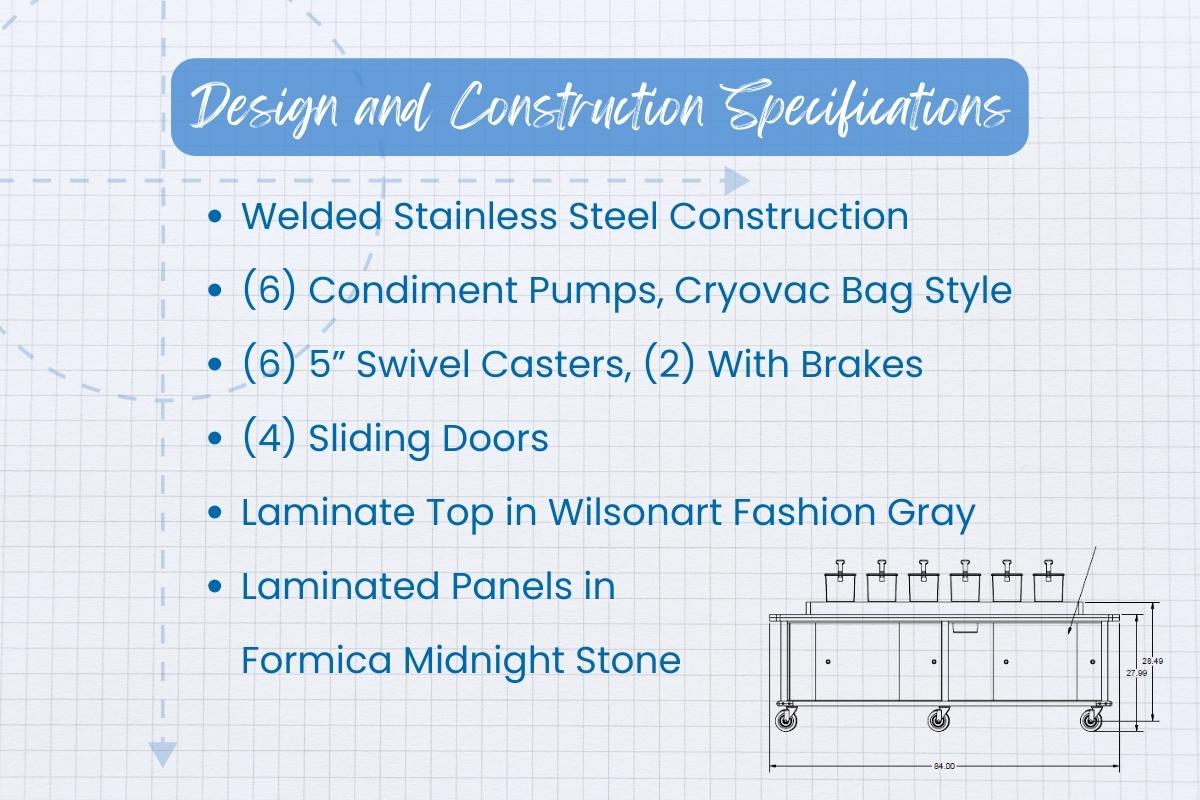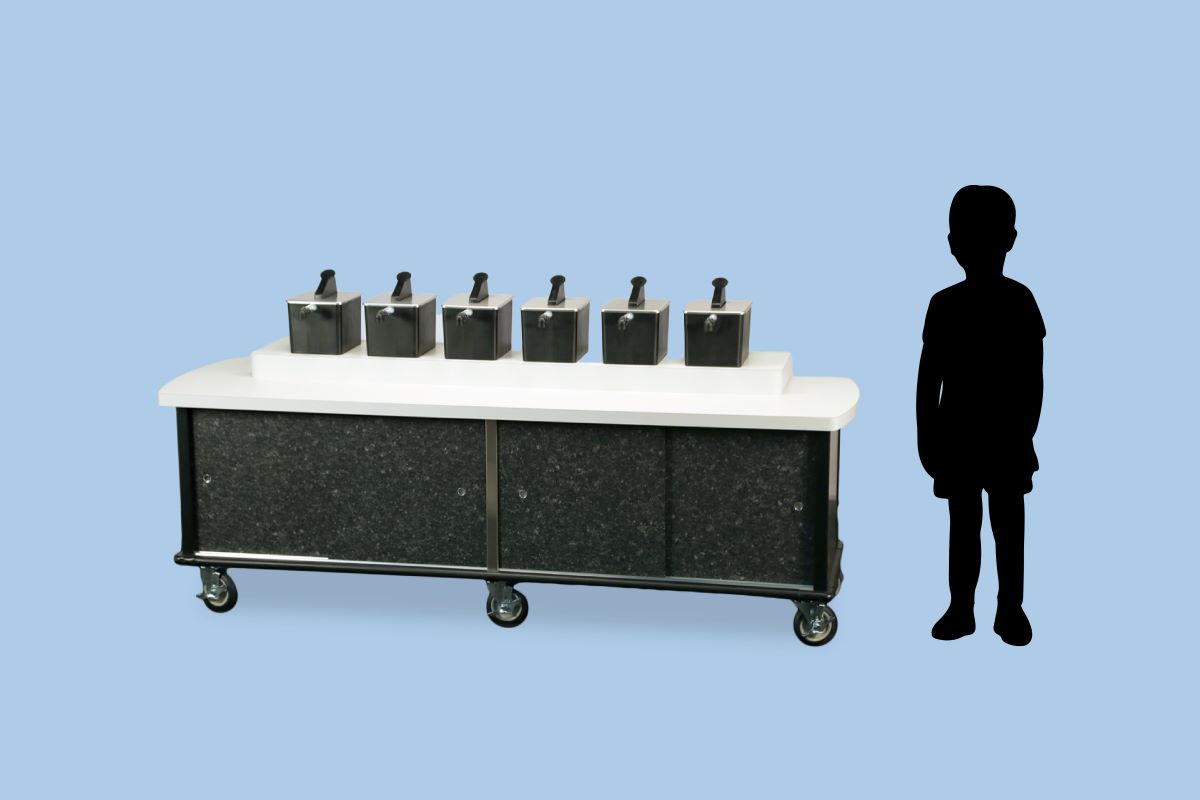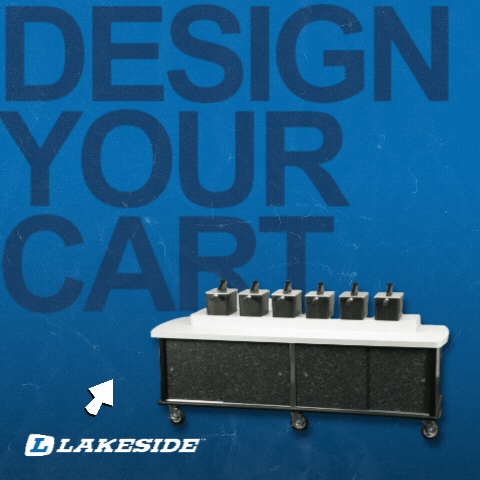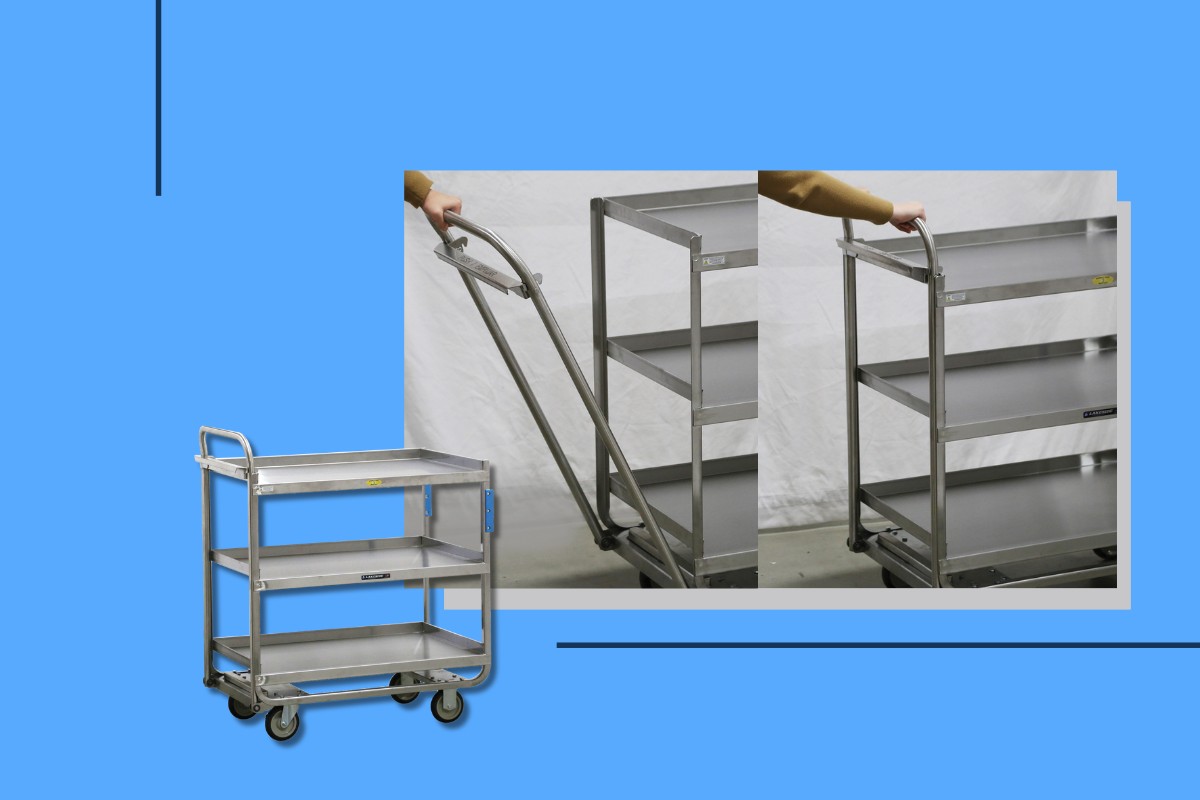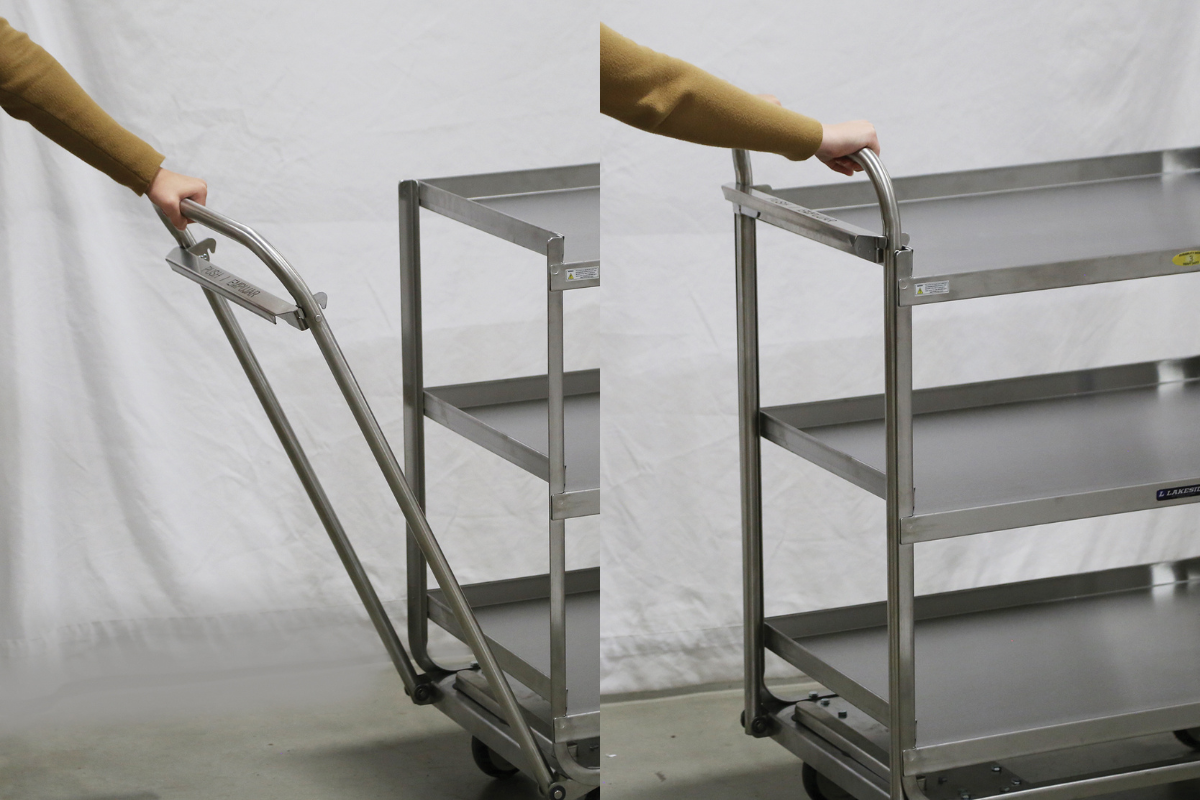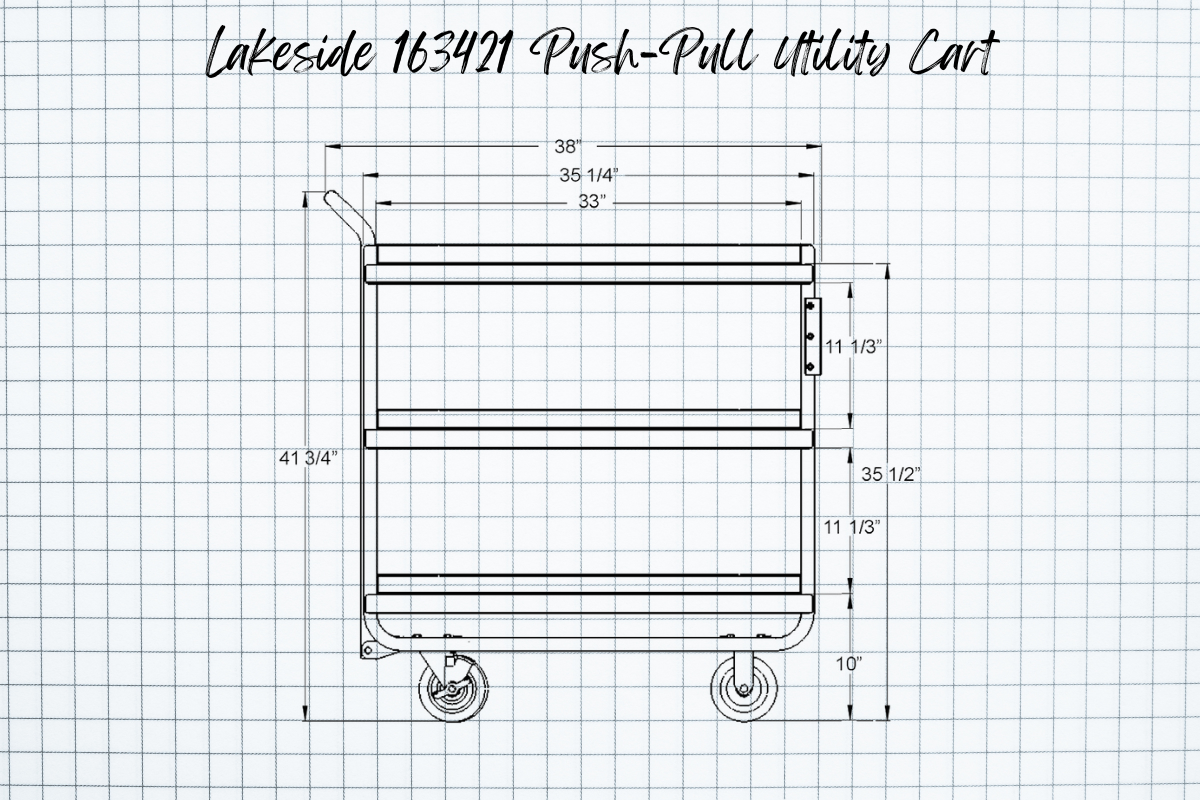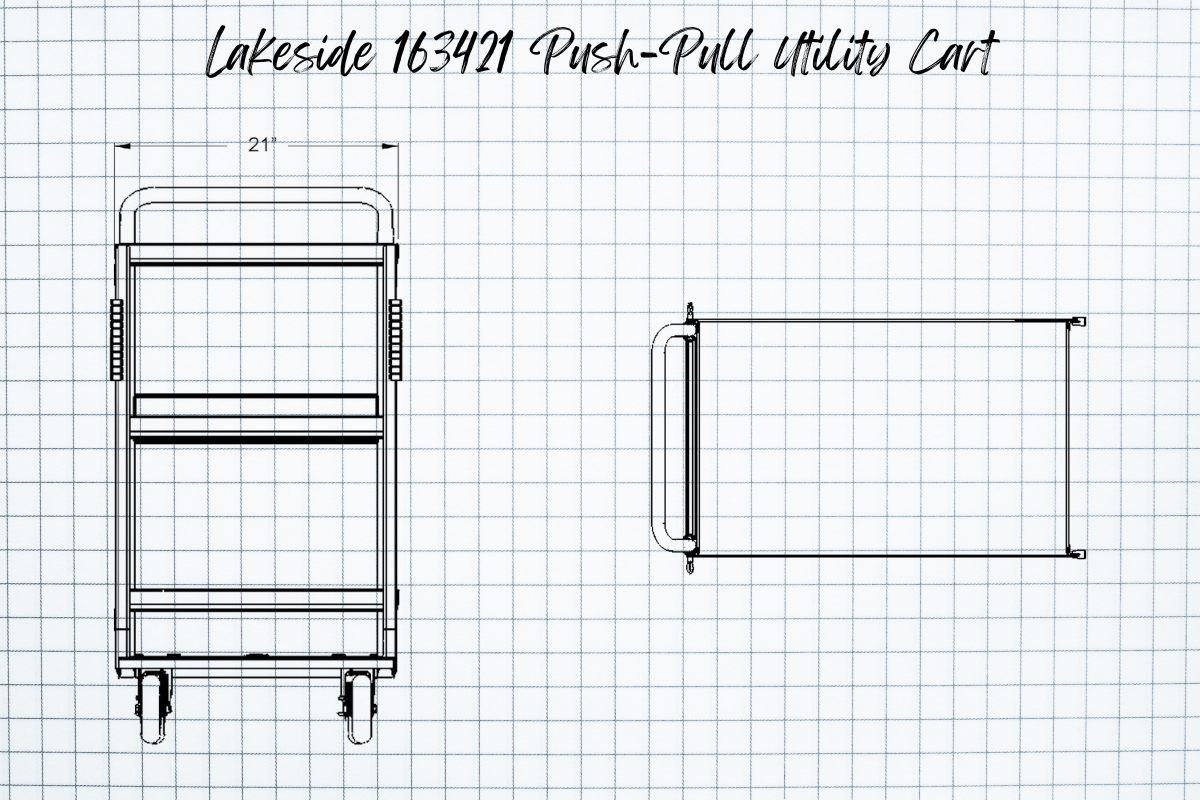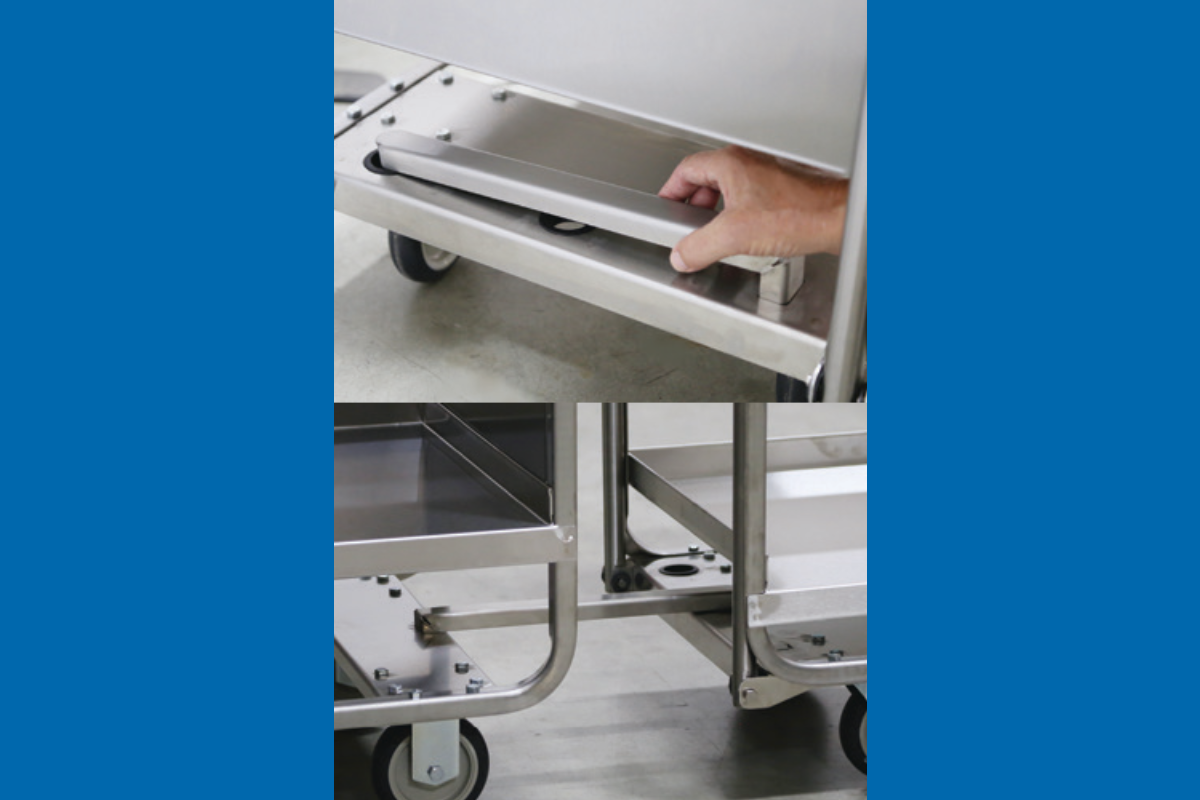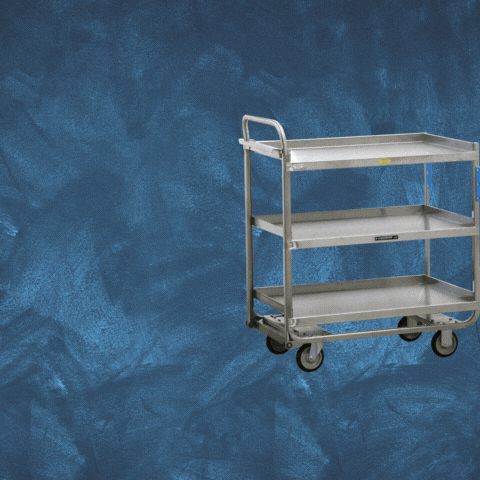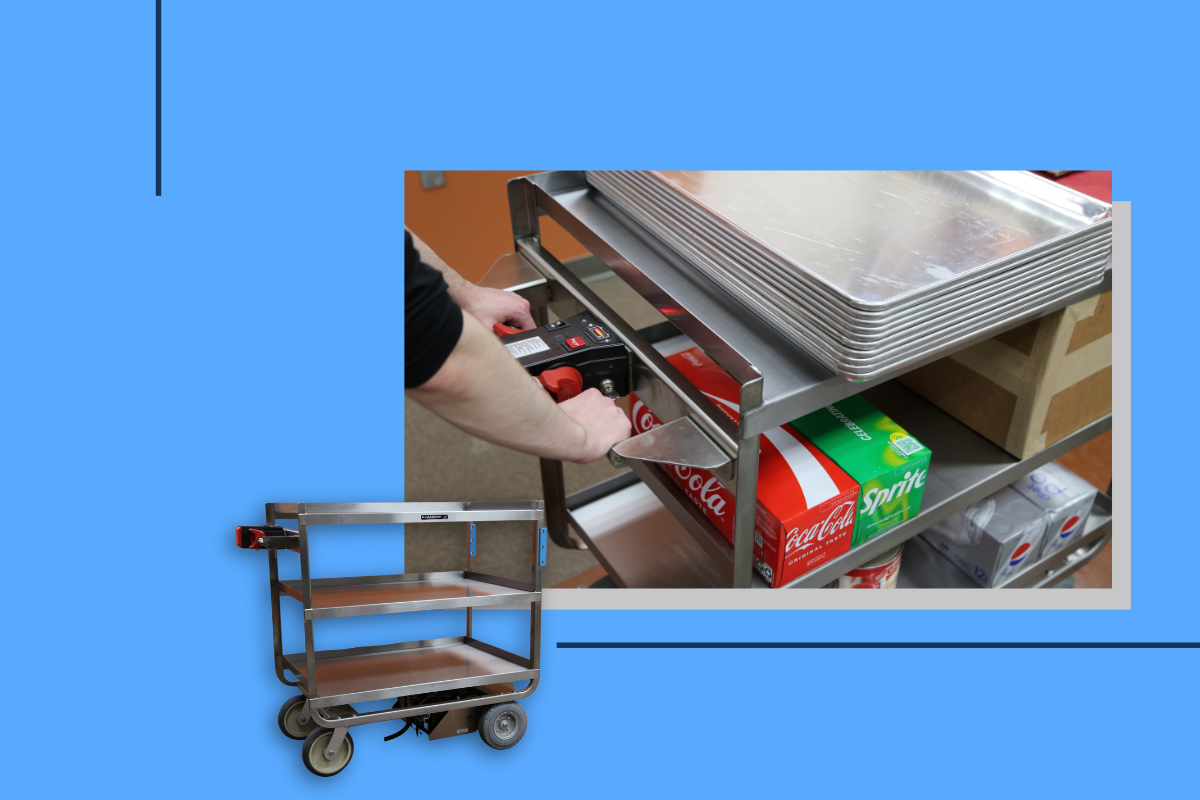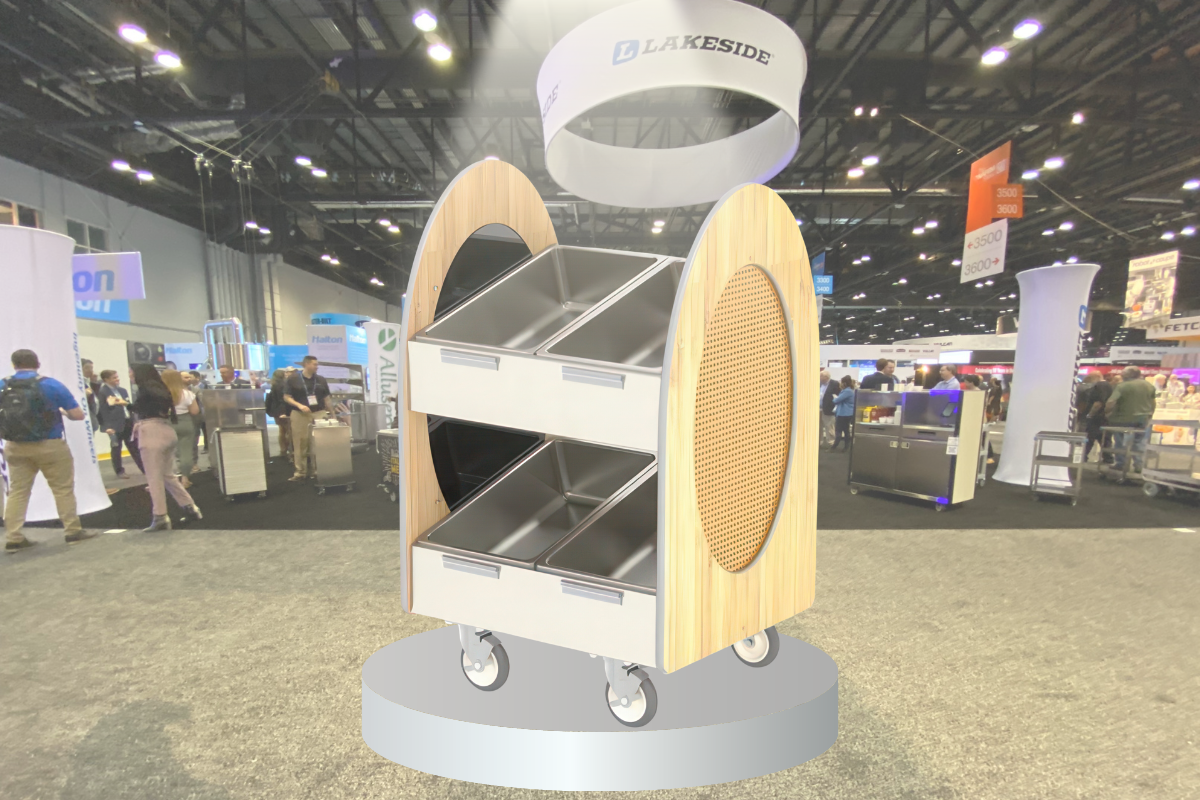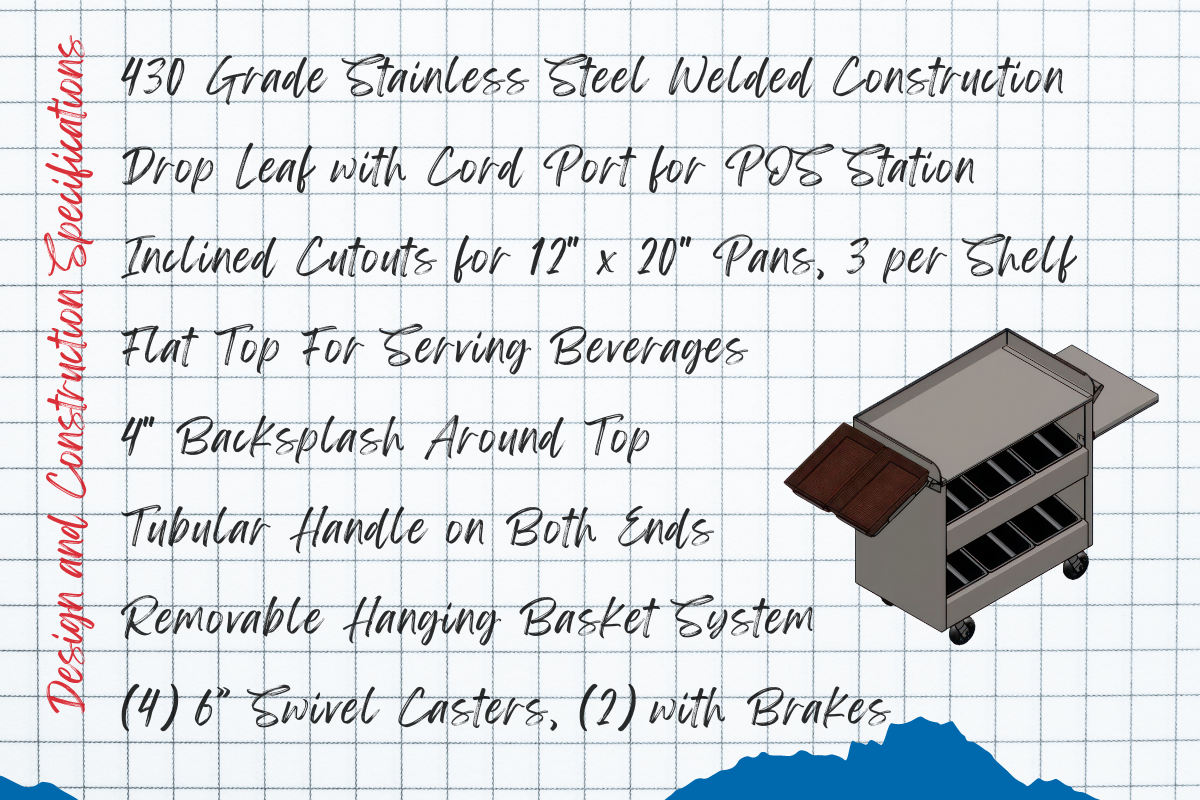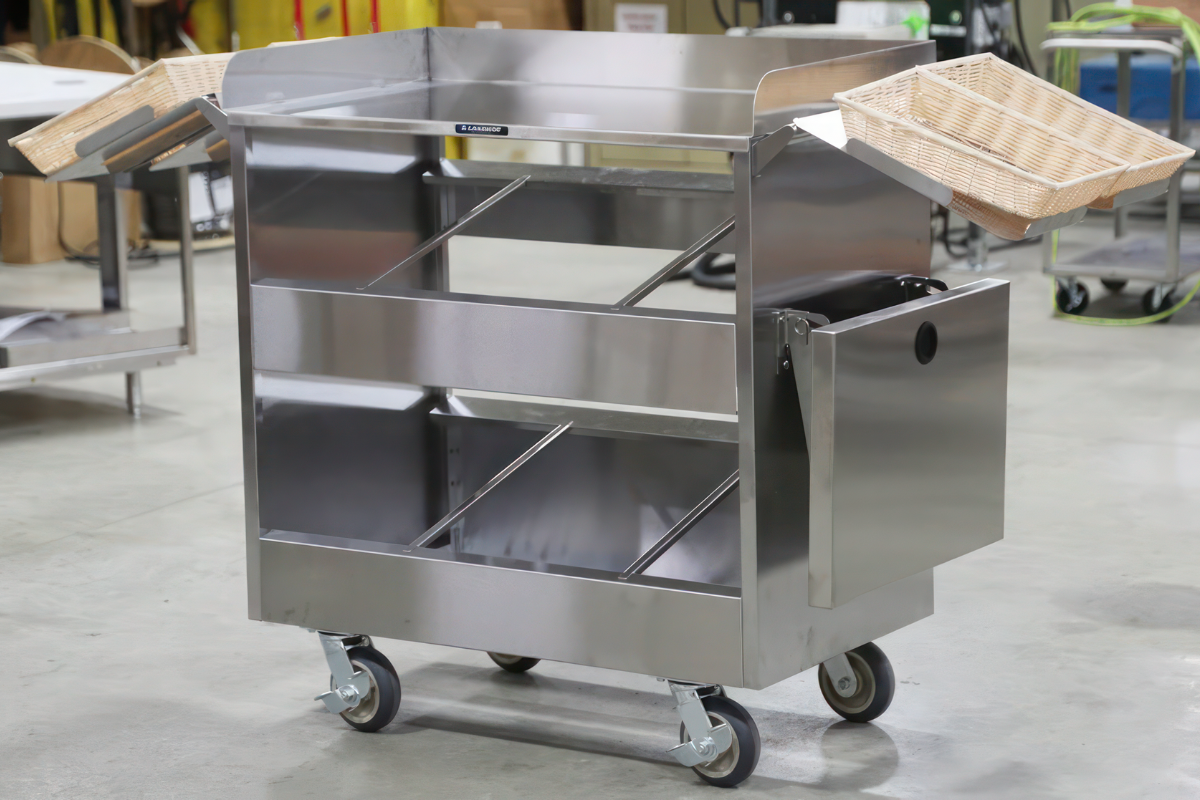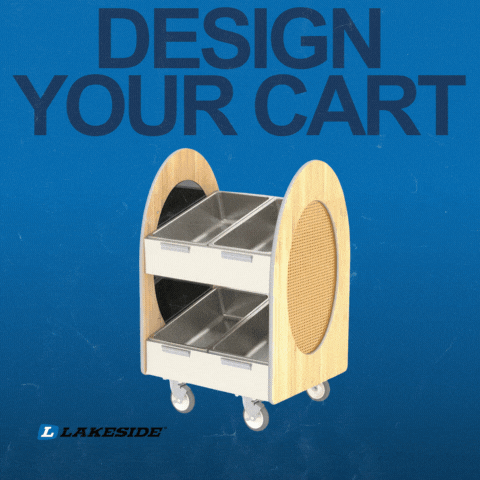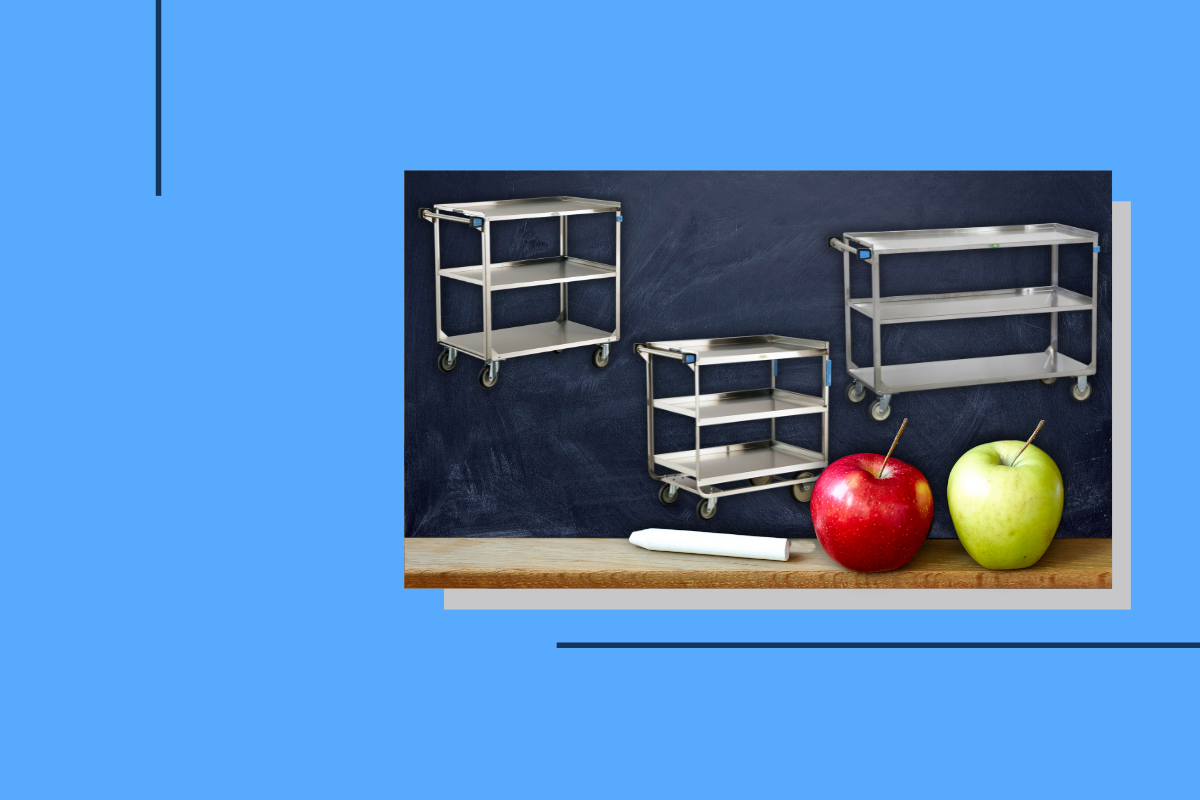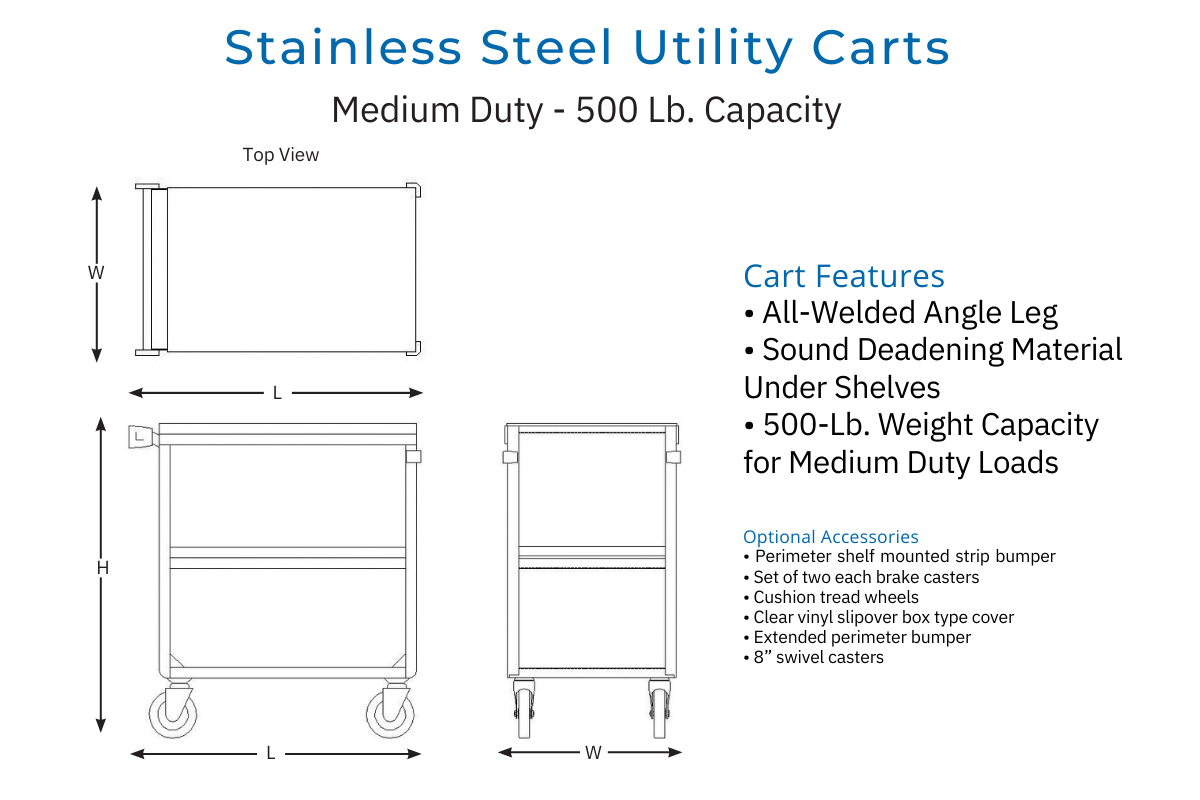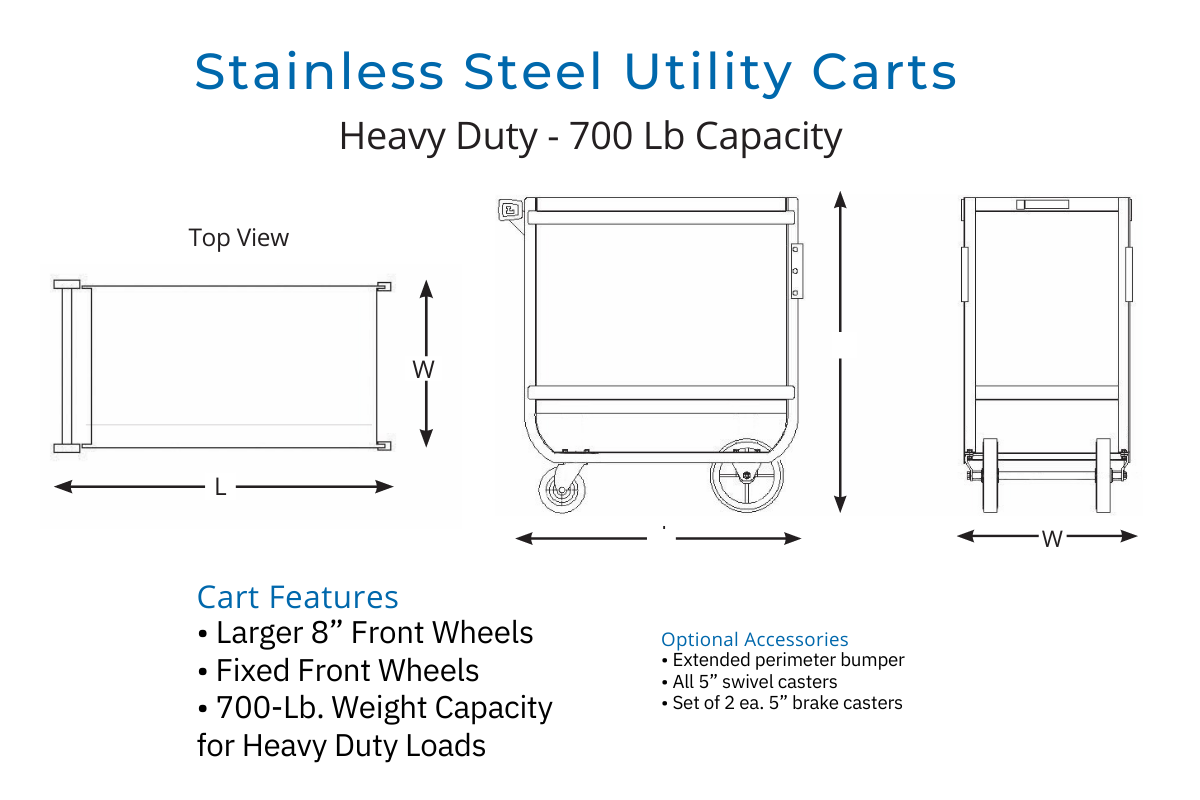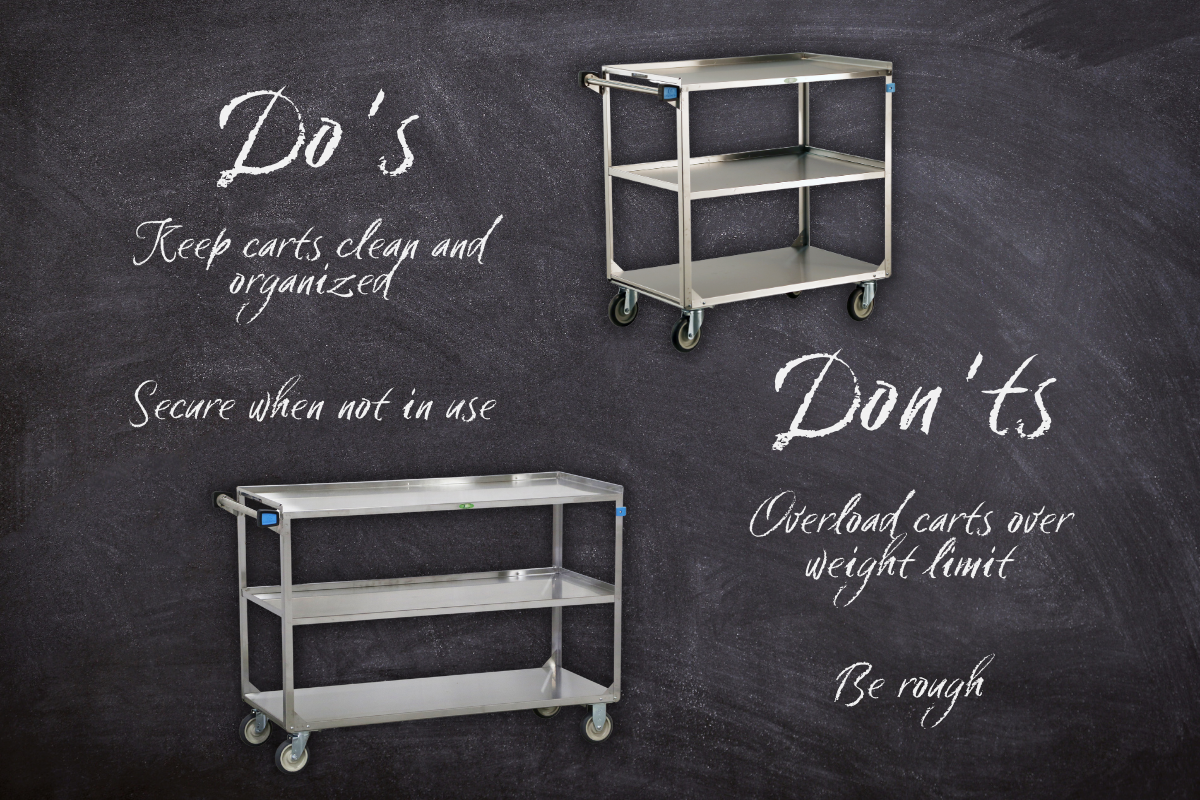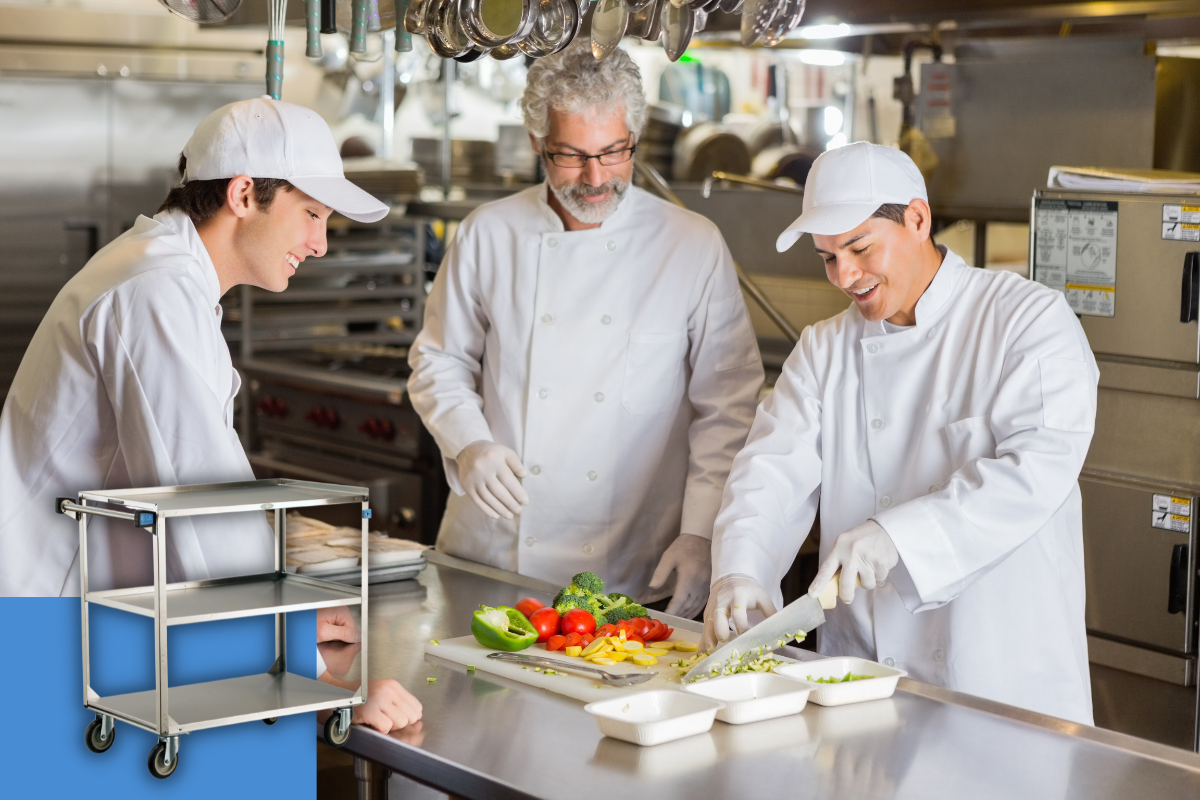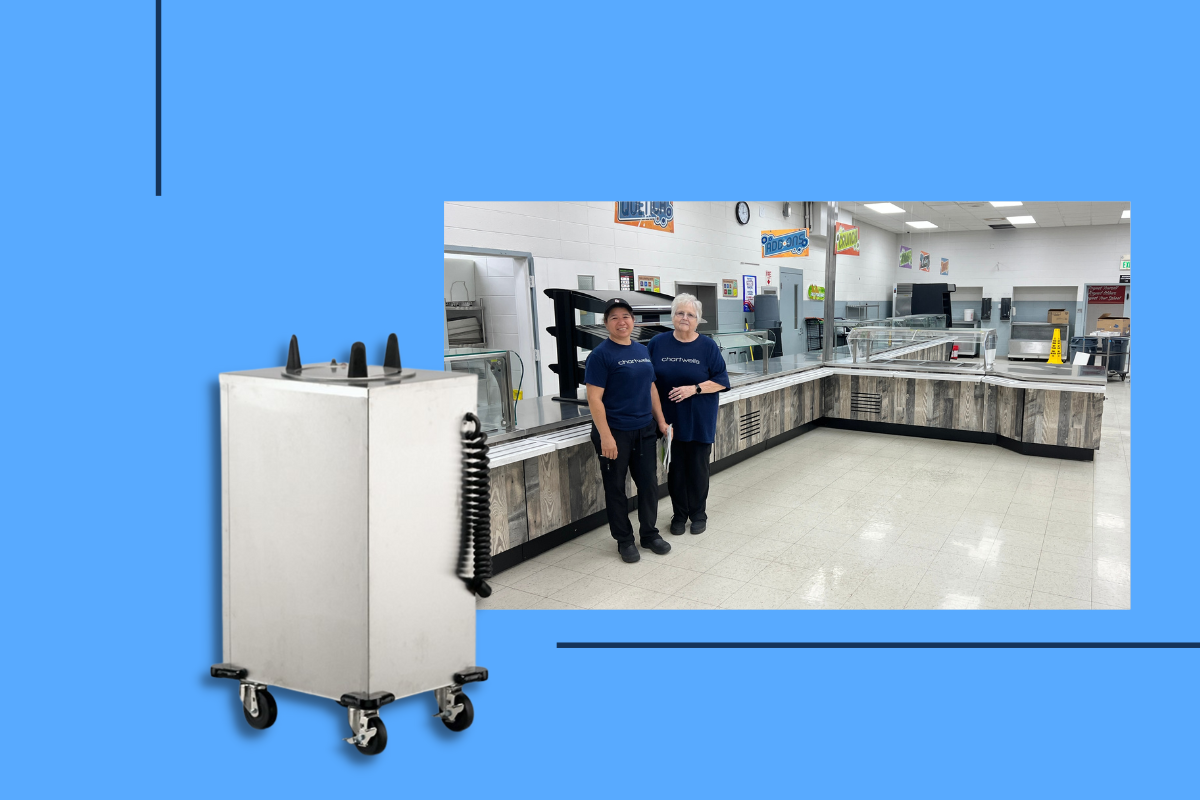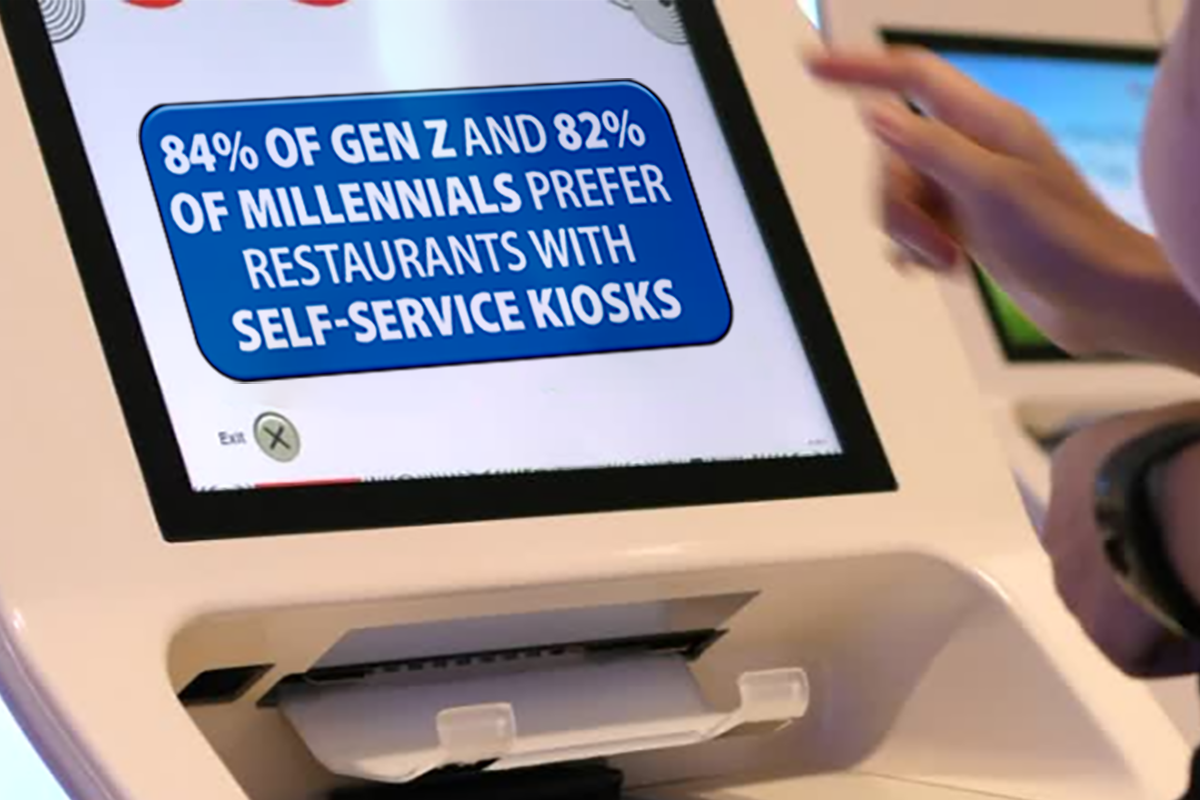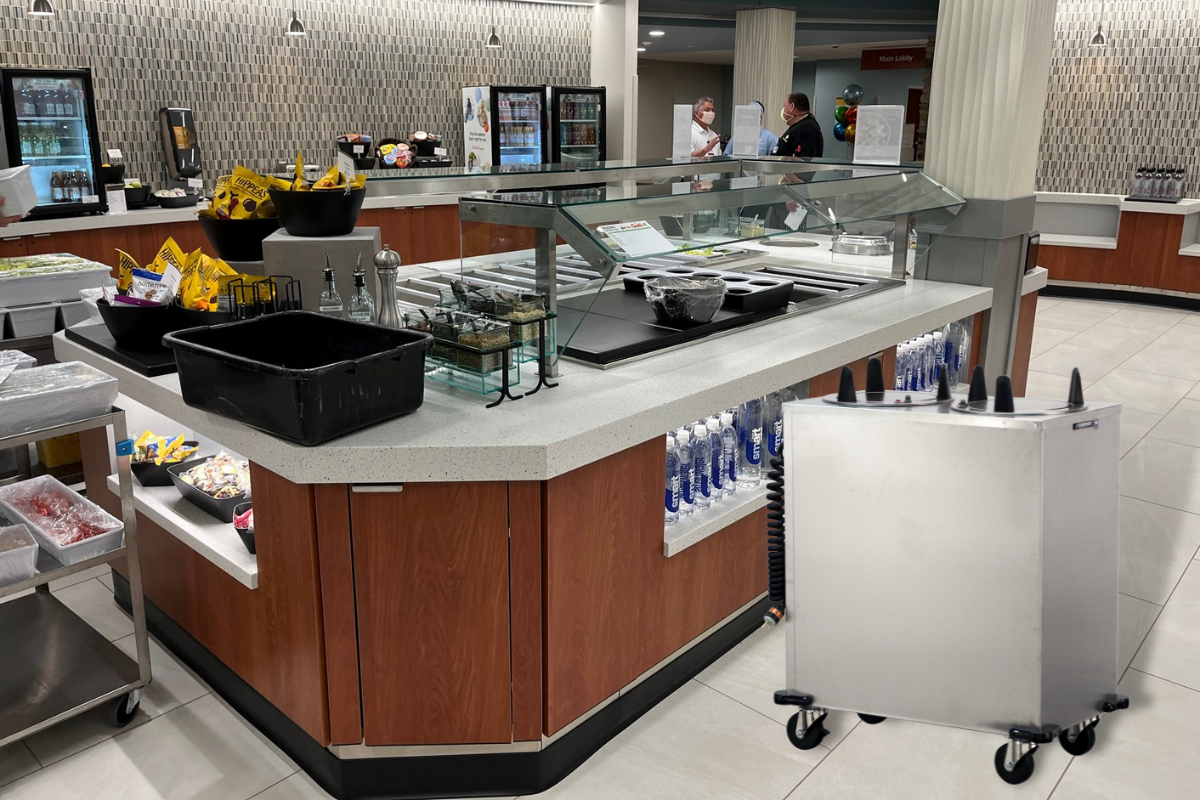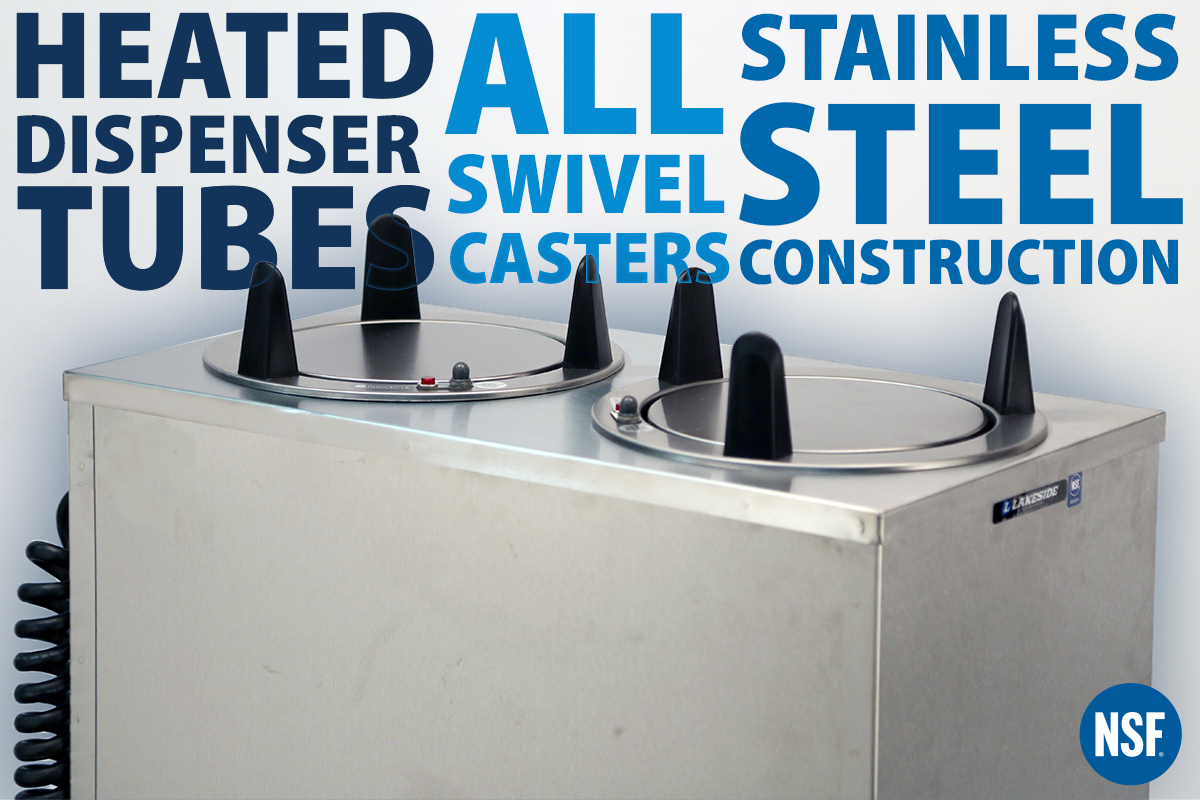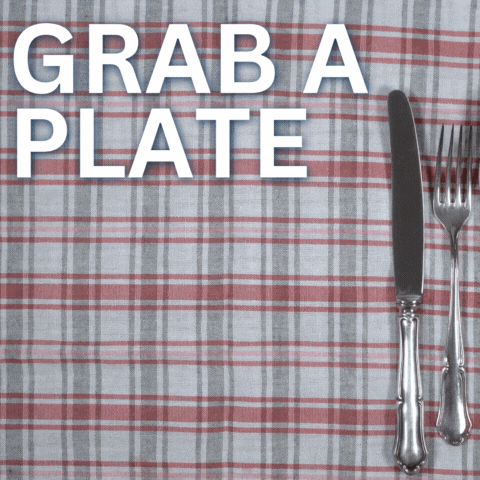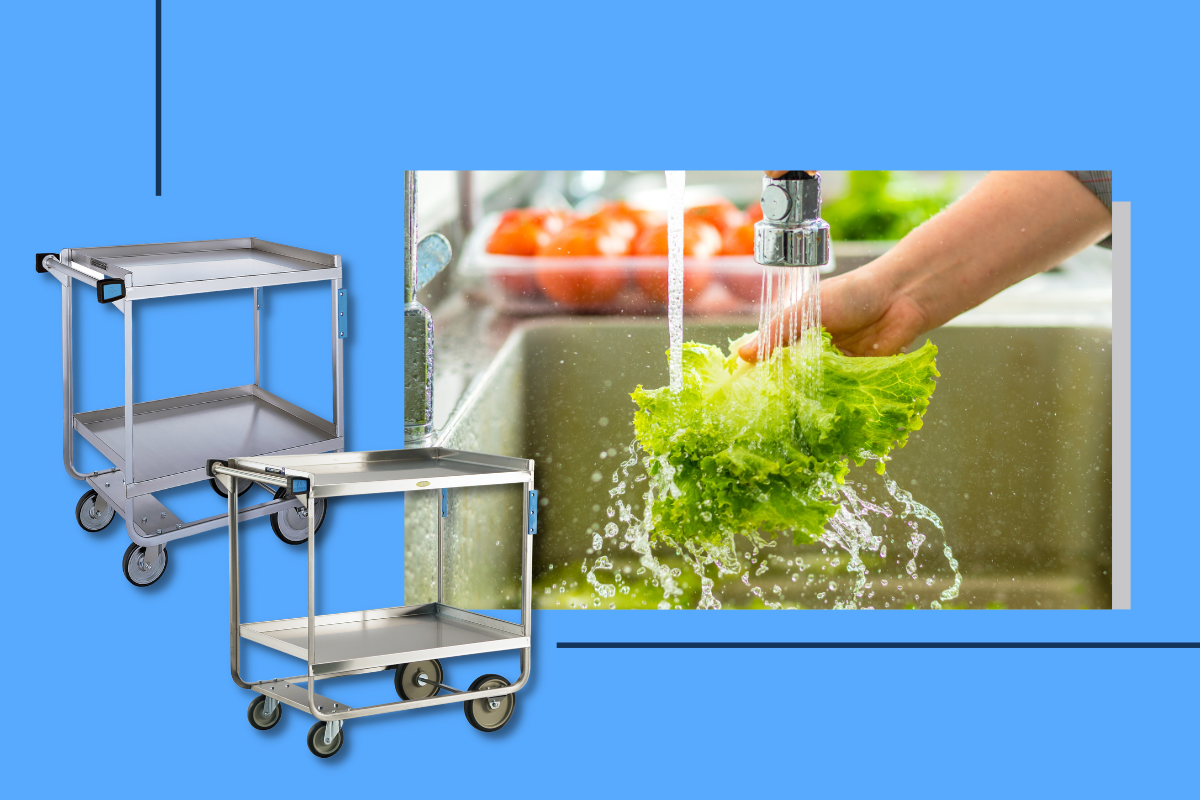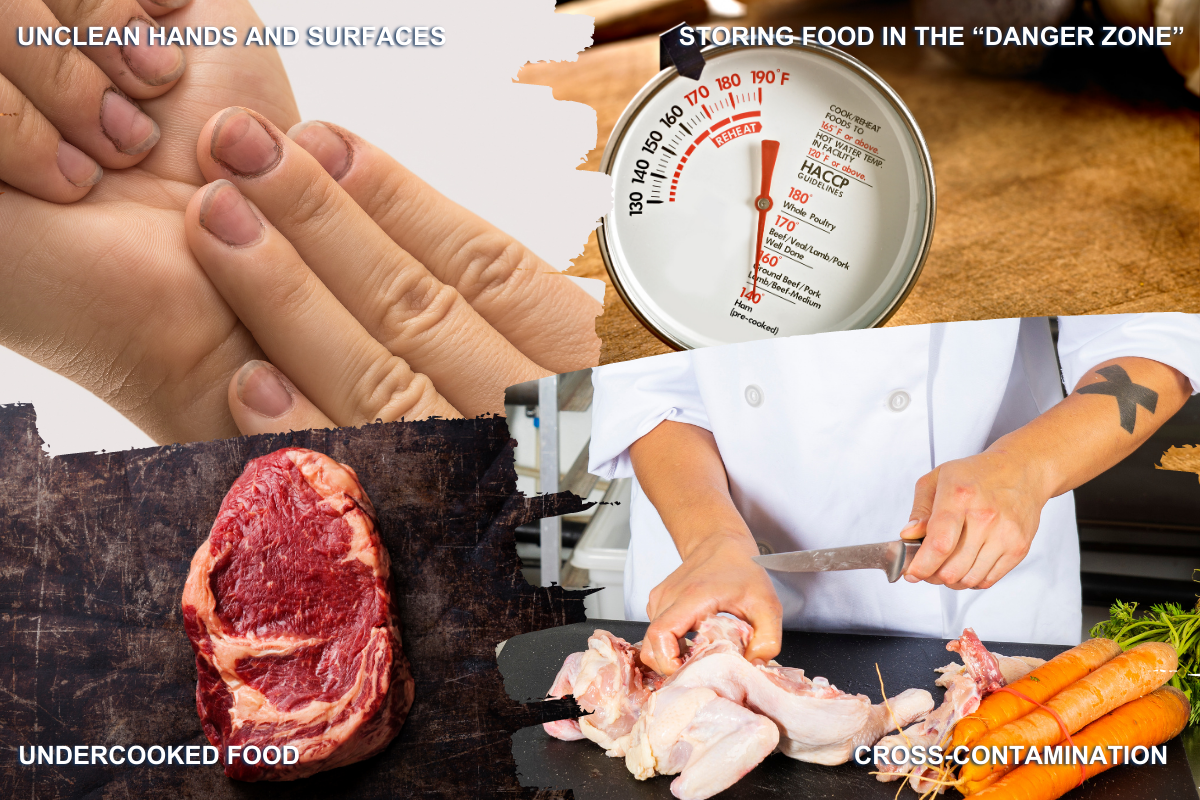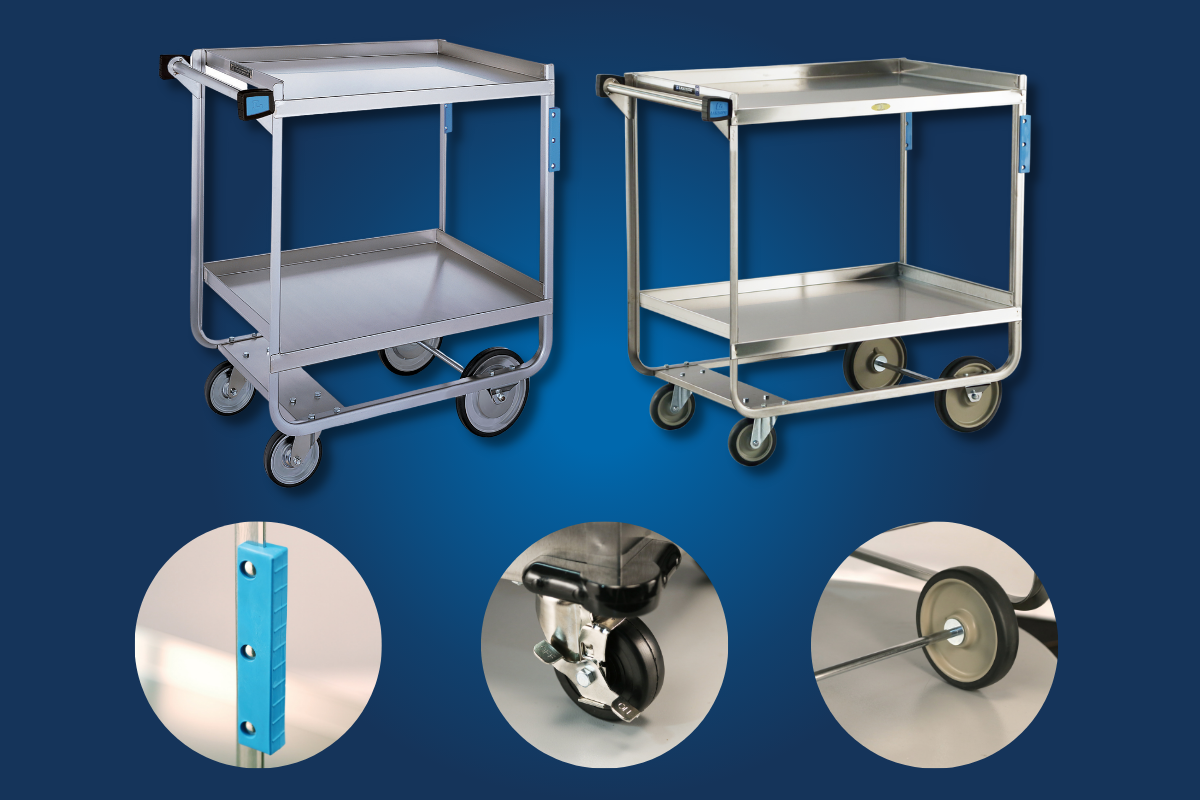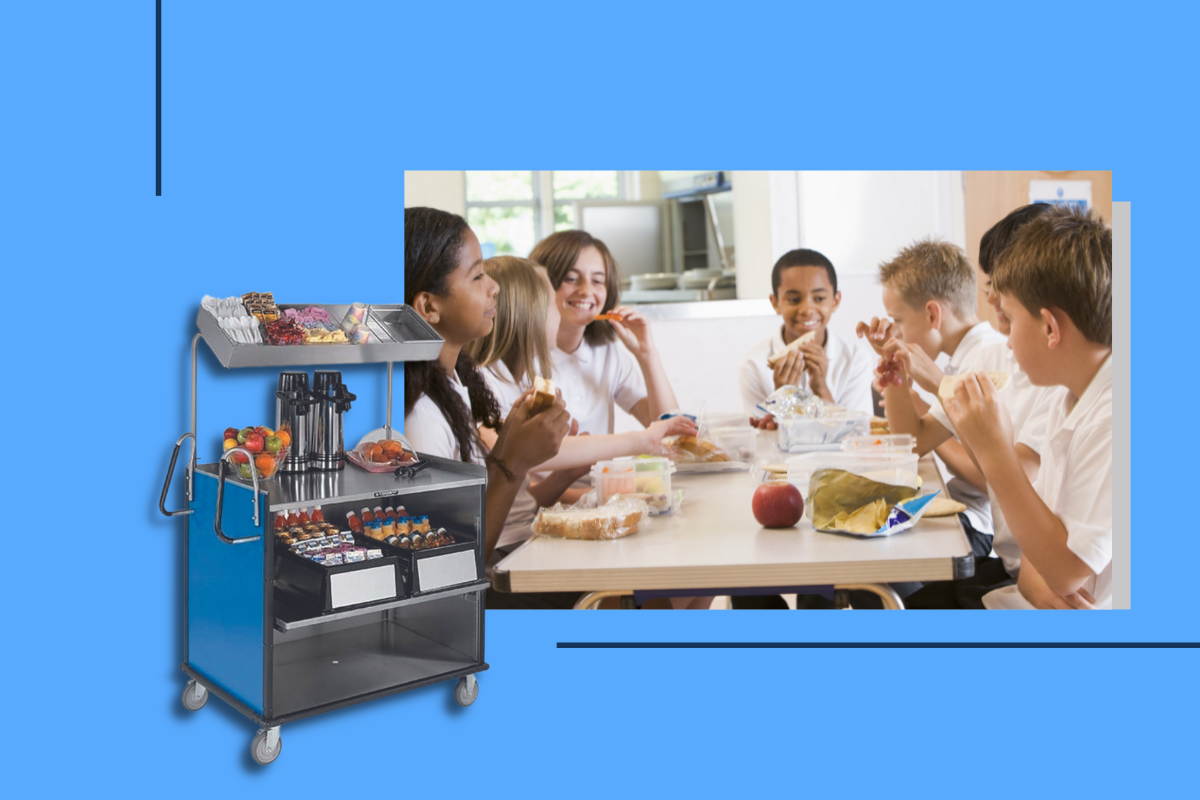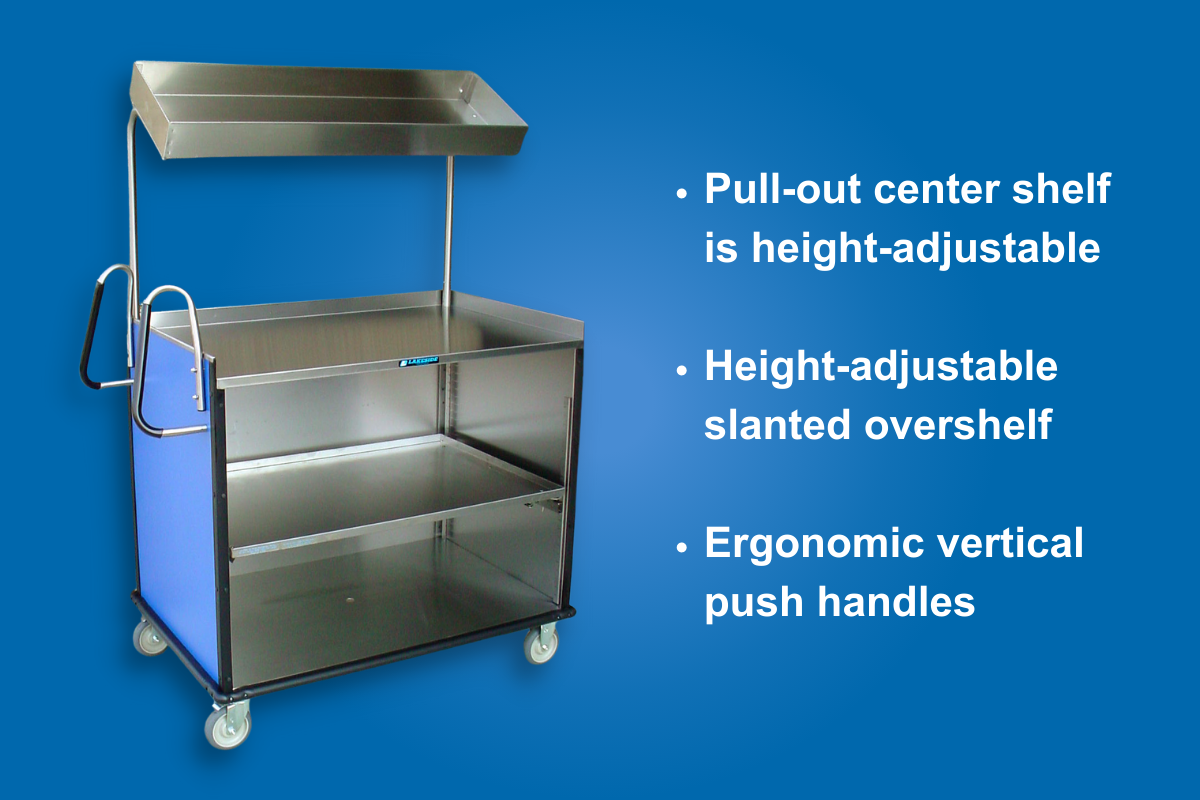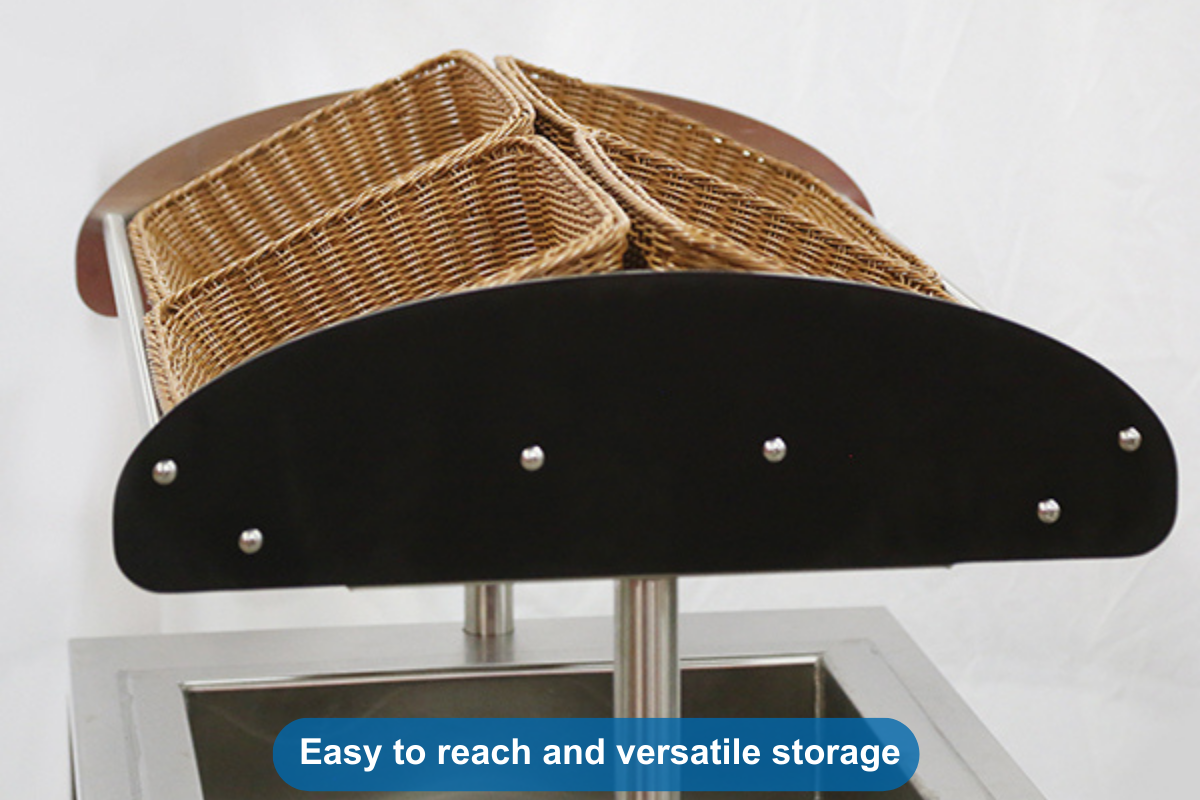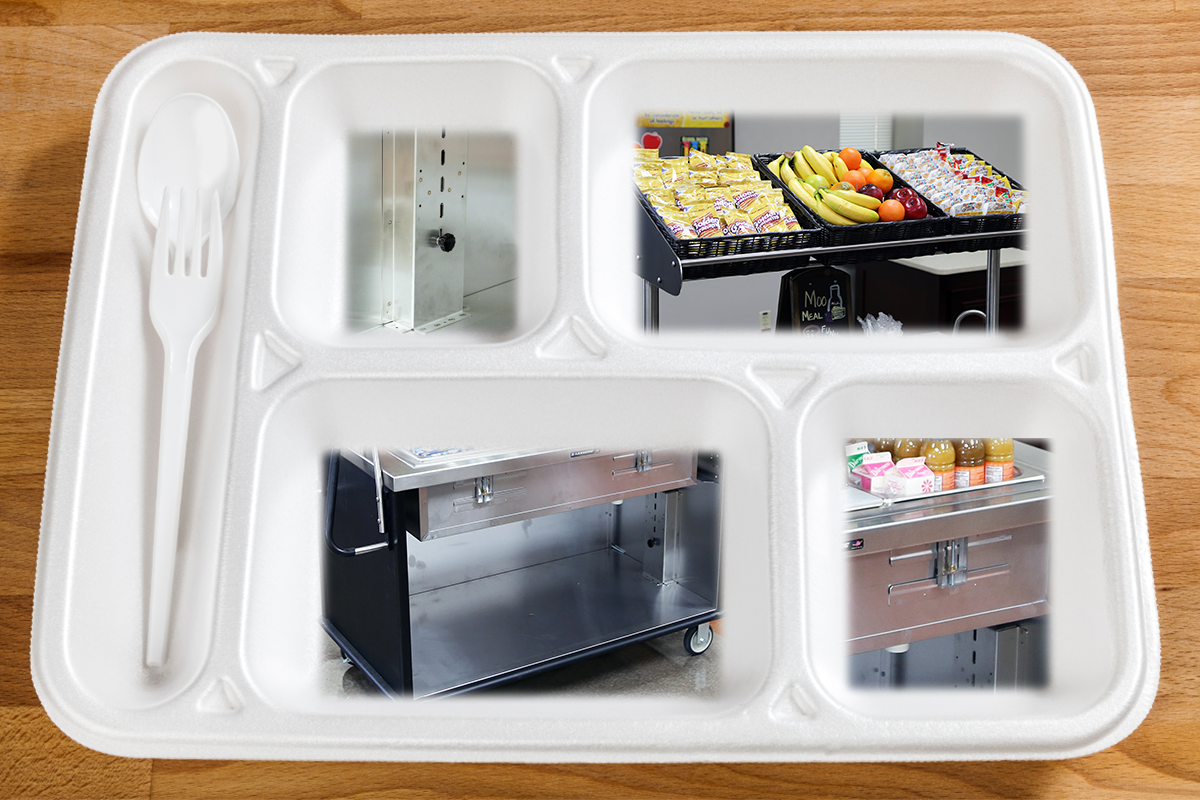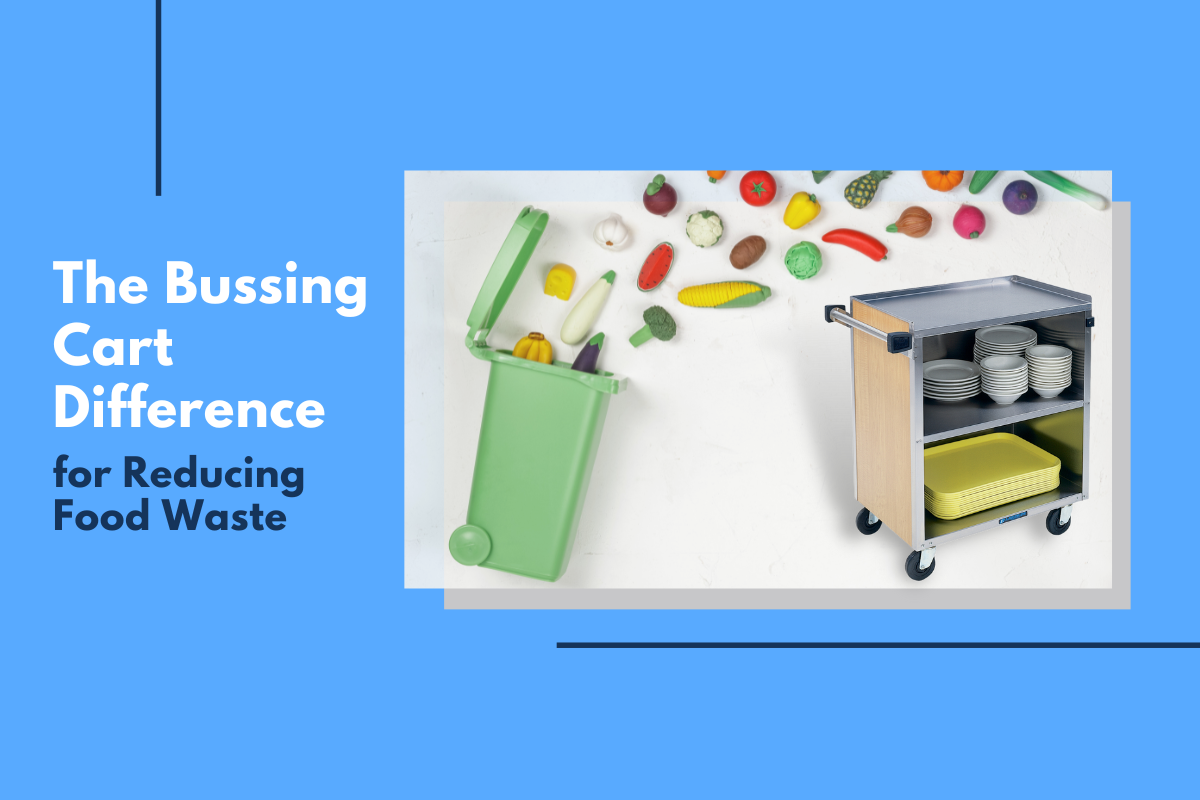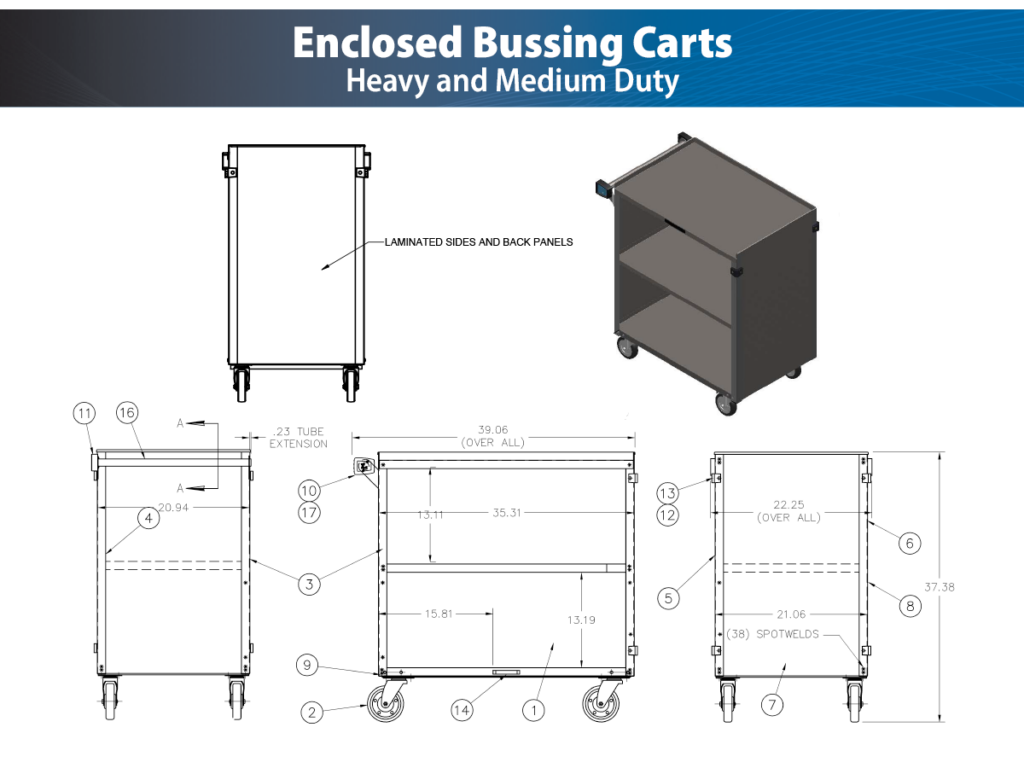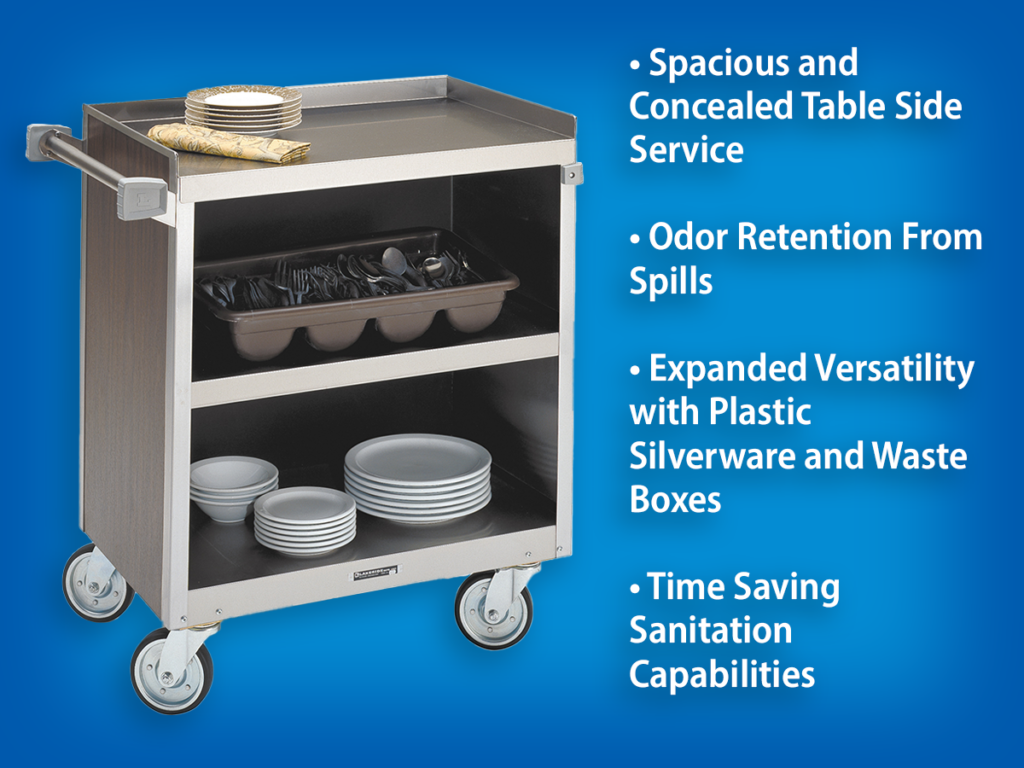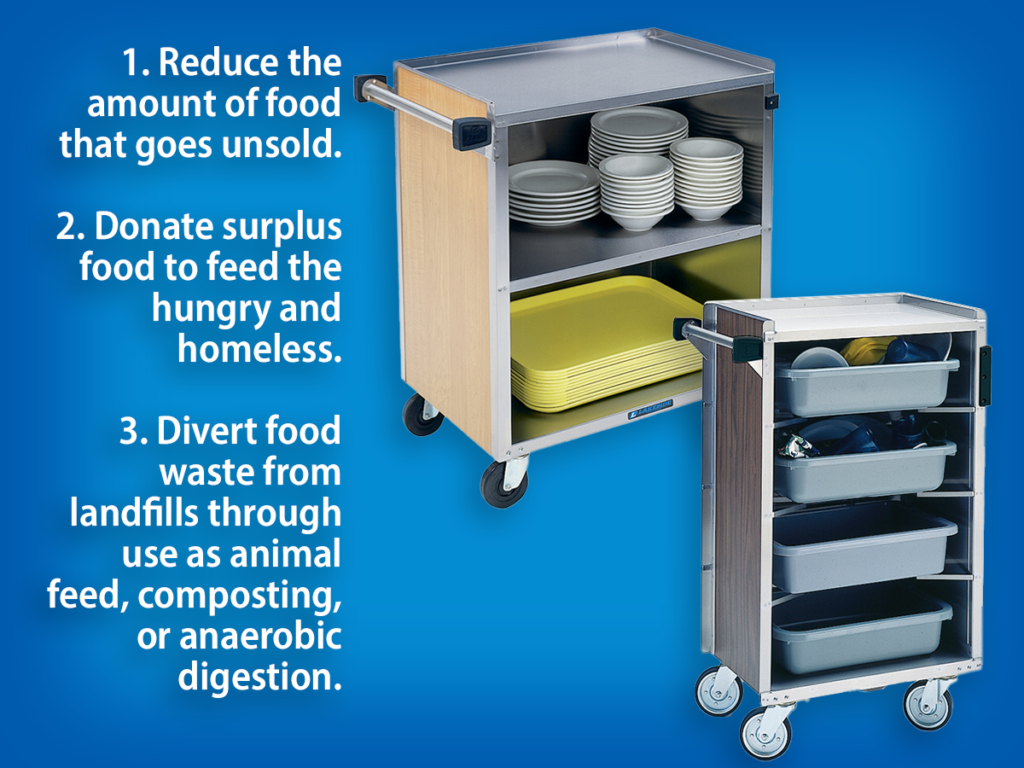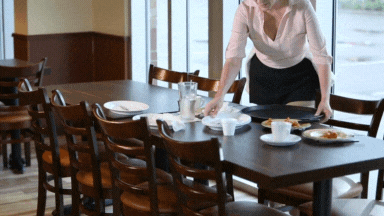As our society becomes increasingly dependent on technology and automation, the Lakeside Motorized Utility Cart can be a game-changer in various industries for a variety of operators. Whether that operator is working in healthcare, long-term care, hospitality, K-12, or C&U, the Lakeside Motorized Utility Cart can make hard work more efficient and effortless. The Lakeside Motorized Utility Cart, in particular, is a powerful and sustainable tool that can make transportation of heavy items over long distances much more manageable with less staff. In this how-to guide, we will take a closer look at the features of the Lakeside Motorized Utility Cart and offer some tips on how to use it.
Breaking Down The Controls…
Before an operator starts transporting with the Lakeside Motorized Utility Cart, they must get accustomed to the cart’s controls. The Lakeside Motorized Utility Cart comes with a wealth of versatile controls all at the fingertips of foodservice operators that step up to its ergonomic push handle. Here’s a brief rundown of each control:
Battery Charge Indicator - Indicates life of battery carriage underneath transaxle. If green bars are present, the cart is almost or fully charged. If only yellow or red bars are present, then the cart needs to be charged. Note: A fully charged battery will last 8 hours with standard usage.
Dual-Speed Switch - Features both a white silhouette of a turtle and rabbit. When the turtle’s side is pushed down, the cart can accelerate up to 1.5 MPH. When the rabbit’s side is pushed up, the cart can accelerate up to 3.0 MPH!
Horn Button - Activates the cart’s 68 dB horn. This is the perfect safety feature when an operator is transporting in a loud and traffic heavy environment such as a school, kitchen or loading dock.
Keyed Lock - Includes a key utilized for turning the Lakeside Motorized Utility Cart “ON” and “OFF”. When the key is inserted inside the key lock, an operator should turn clockwise to turn the cart’s motor “ON”. They should turn the key counterclockwise to turn the cart “OFF”. The keyed lock is also designed to prevent unauthorized usage, which is vital in environments where security and safety are a top priority.
Control Levers - Activate the cart’s forward and reverse acceleration functionalities.
Emergency Stop Button - Immediately stops the cart to ensure operator safety and prevent injuries. Note: Key will need to be turned “OFF” to reset controls after an emergency stop is activated.
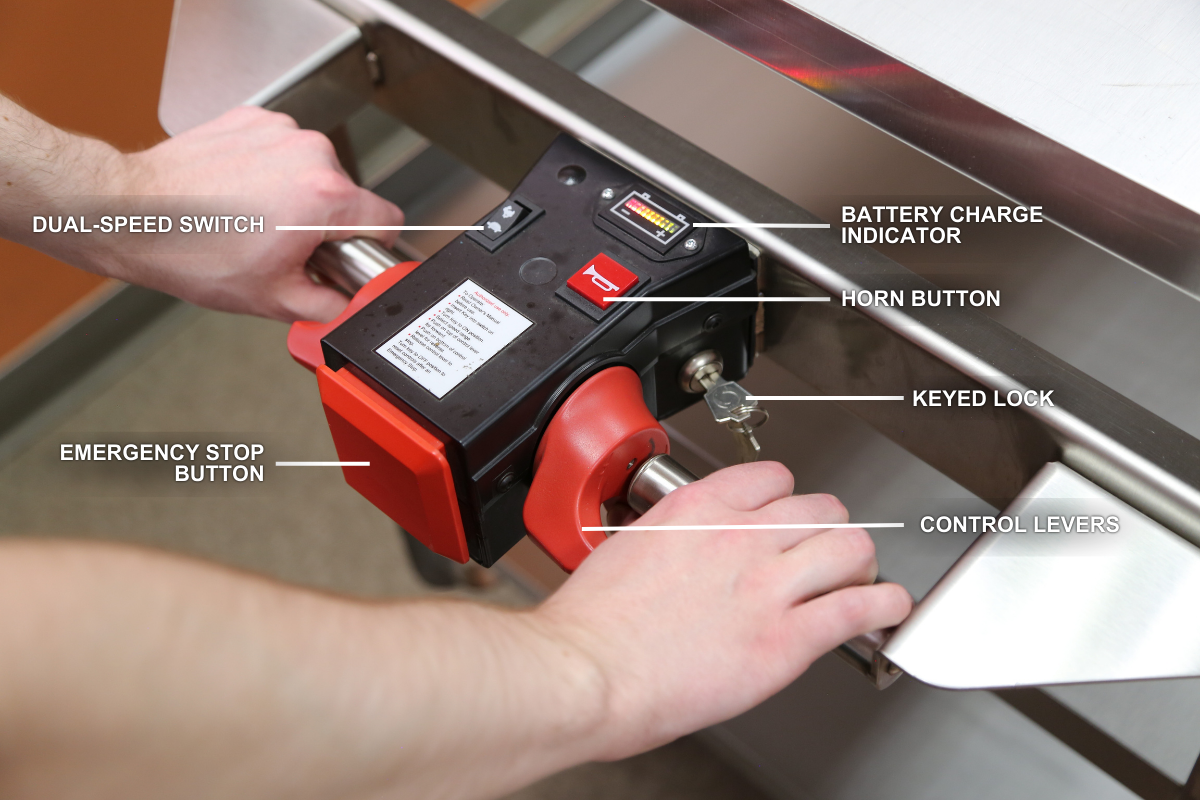
Utilizing Forward and Reverse Control Levers
Now that an operator has gotten familiar with the Motorized Utility Cart’s main functions, they are now ready to begin transporting supplies from point A to point B. The Lakeside Motorized Utility Cart has forward and reverse motion control levers that allow for effortless transport of heavy loads in any direction, including on uneven terrain. When at the cart’s handle, the operator will see two red levers on both of the control panel’s sides. Push these up and the cart accelerates forward. Push these down and the cart moves in reverse.
When in motion, an operator shouldn’t hesitate to use the dual-speed switch as well. As mentioned above, this switch can convert from either 0.1 to 1.5 MPH or 0.1 to 3.0 MPH on the fly! This is incredibly useful when an operator needs that extra kick when going up a steep incline.
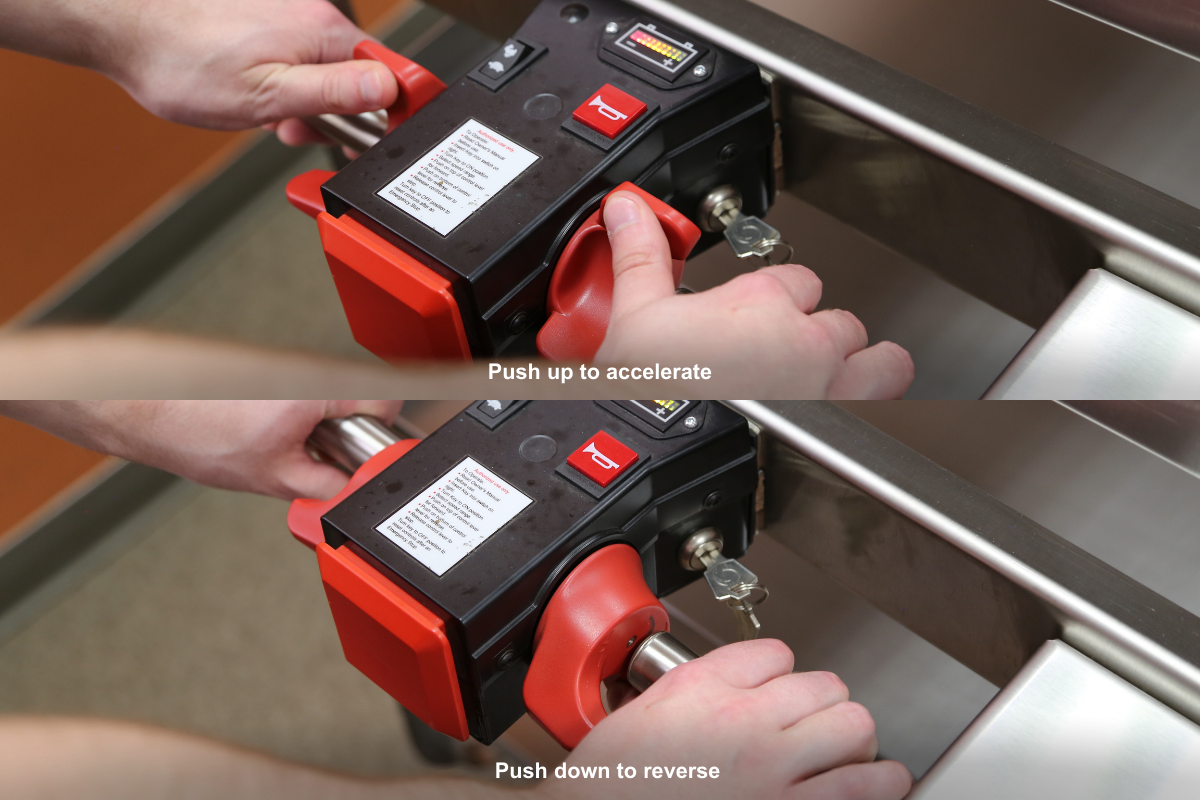
Switching to Non-Motorized Use
There is an engagement override lever located on the right side of the transaxle, which provides the option for non-motorized use. To switch to non-motorized use, an operator should simply push the lever up. Conversely, to return to motorized use, an operator should push the lever down, making it perpendicular to the transaxle. This feature offers convenient versatility and ease of operation.
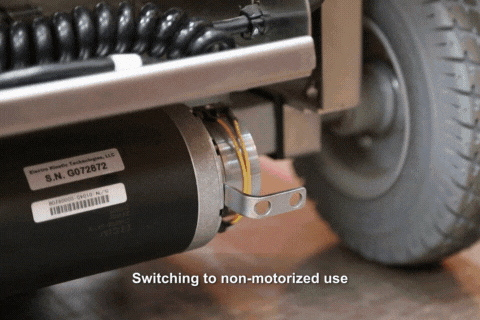
Hauling Heavy Duty Loads Over Long Distances and Inclines
The Lakeside Motorized Utility Cart is powered by a powerful 24-volt DC transaxle that allows it to haul heavy duty loads over long distances and inclines without any difficulty or fatigue. This Lakeside cart's robust battery powered electric motor does not require any fuel or gas, making it economical and environmentally-friendly. The motor is also incredibly quiet, which is ideal for use in environments such as hospitals, where noise can cause disruptions. The cart's 3 spacious 24” x 26” shelves with 3 shelf edges up, 1 down, enables safe transport of heavy duty loads up to 1,000-Lb., increasing labor efficiency.
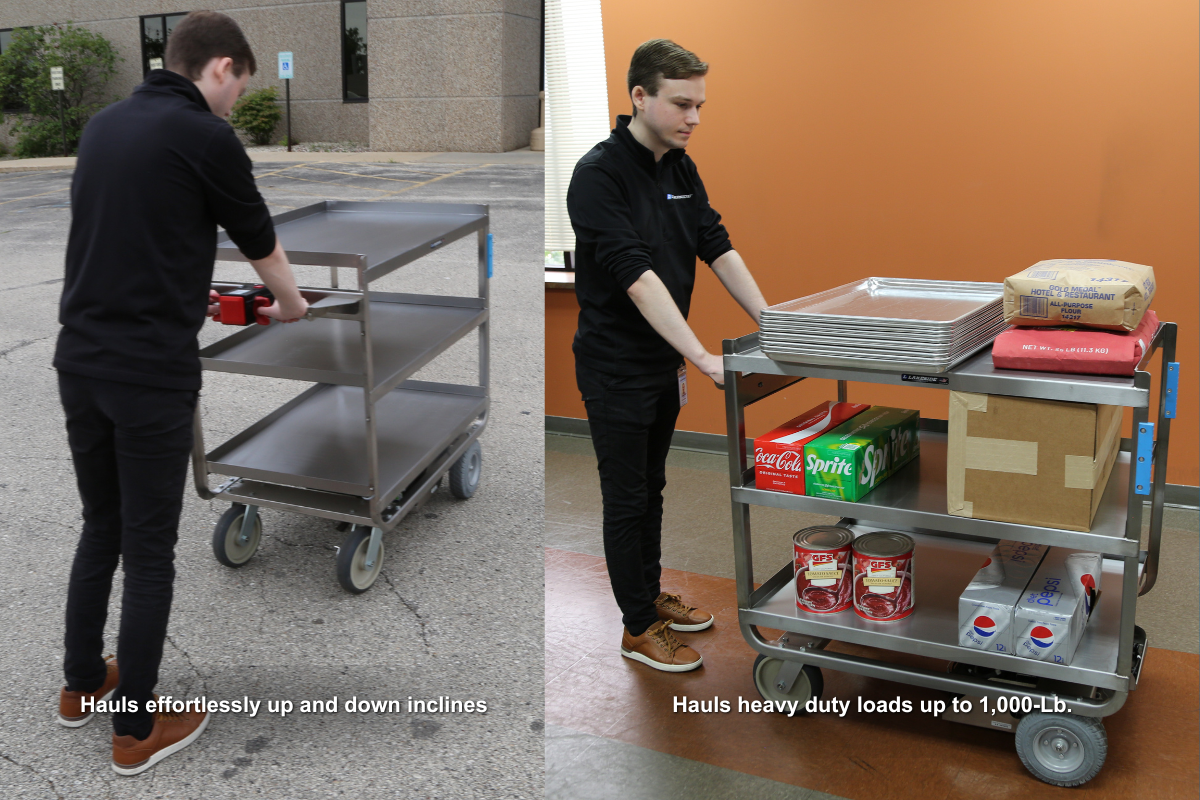
Activating Automatic Stop
The Lakeside Motorized Utility Cart also has an automatic stop feature that activates when the operator releases control. This ensures safe and convenient operation of the cart when hauling heavy duty loads up and down inclines.
Casters For a Variety of Environments and Surfaces
The Lakeside Motorized Utility Cart is a versatile solution for a wide range of environments, including hospitals, senior living communities, schools, loading docks, kitchens, recreation rooms, and parking lots. It is equipped with 4 durable 8" casters that provide excellent grip and stable maneuverability, even on uneven terrain.
The cart features 2 fixed, flat-free non-marking power wheels with grip tread in the front and 2 swivel (with brakes) rear wheels outfitted with non-marking cushion-tread. In order for an operator to engage the rear brakes, they simply need to apply pressure with their foot to either the "OFF" or "ON" side. This straightforward action further ensures the Lakeside cart will not roll down inclines.

Maneuvering Slim Profile Through Most Doorways
One of the best features of the Lakeside Motorized Utility Cart is its slim profile, making it perfect for use in and around tight spaces. This Lakeside cart's 24-1/2” wide slim design allows it to fit through most doorways comfortably, making transportation of heavy items more accessible and safer.
The cart's narrow profile also enhances its maneuverability around tight corners and furnishings, making it an ideal choice in healthcare environments. Combine this with the Lakeside Motorized Utility Cart’s motion controls and hauling heavy loads around corners and tight spaces is effortless.
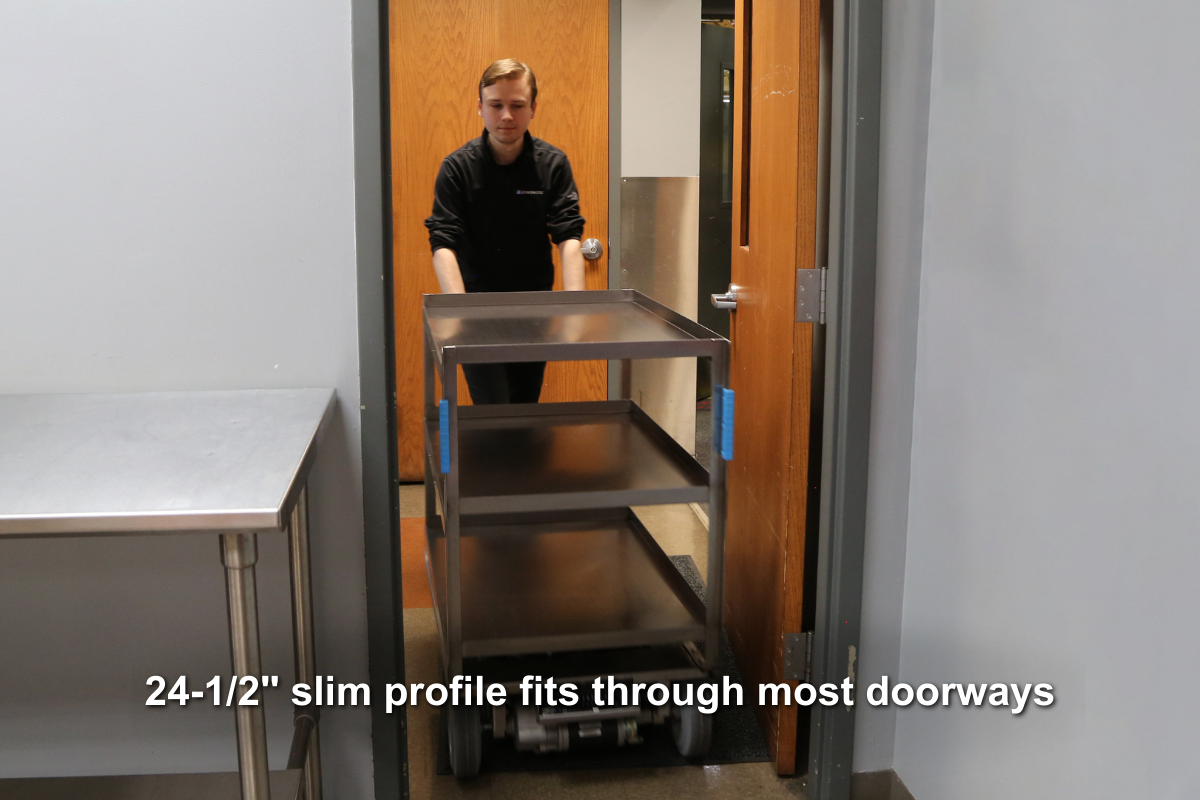
Charging Quick Charge Battery Carriage When Not in Use
To get the most out of the cart's power, it is essential to ensure that the battery is charged properly and maintained regularly. This is done by turning the key counterclockwise to power it off. Immediately after, an operator should plug the quick charge battery carriage’s power cord into a nearby outlet. The power cord possesses three tongs and is located at the front of the cart on top of the transaxle for easy storage and access.
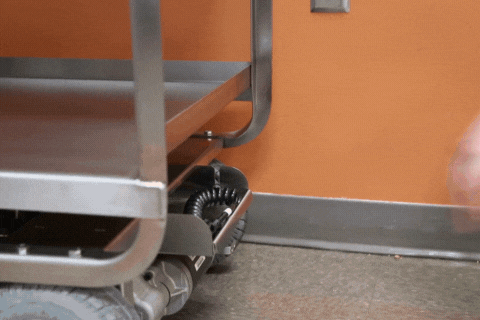
Static Release Floor Belt Dissipates Static Charges
The battery carriage also includes a static release floor belt. This is an overlooked safety feature that dissipates static charges so that the operator isn’t electrocuted or seriously injured. When looking under the Lakeside Motorized Utility Cart, an operator will notice it hanging off of the battery carriage.
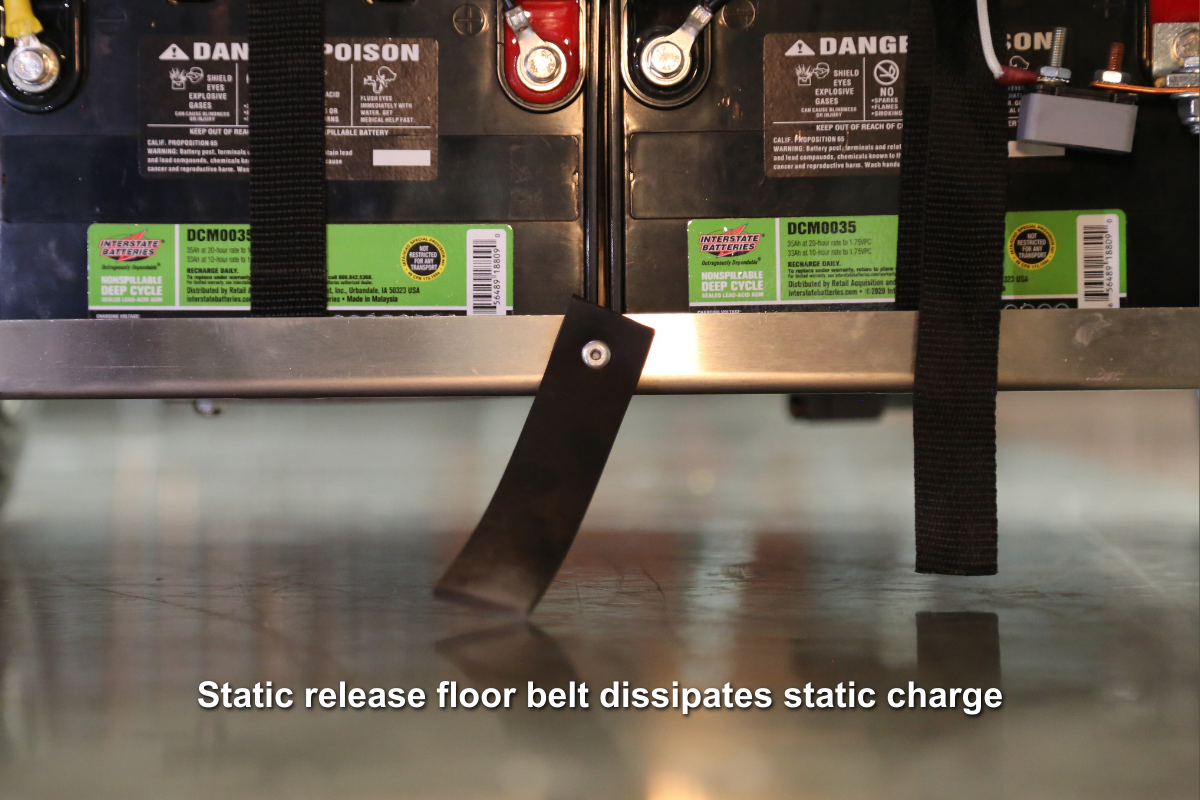
It’s Time to Power Up
The Lakeside Motorized Utility Cart is an excellent investment for both foodservice and healthcare industries that require the transportation of heavy items with limited staffing. Its powerful battery powered motor, slim design, and versatile features make it a top choice for effortlessly hauling heavy loads in various industries, including healthcare, long-term care, hospitality, K-12 and C&U settings. By following our tips on how to use it correctly, an operator can maximize the benefits of this Lakeside cart and make work more efficient, effortless and fatigue free! Click ‘Power Up’ below to see the Lakeside Motorized Utility Cart in action!
